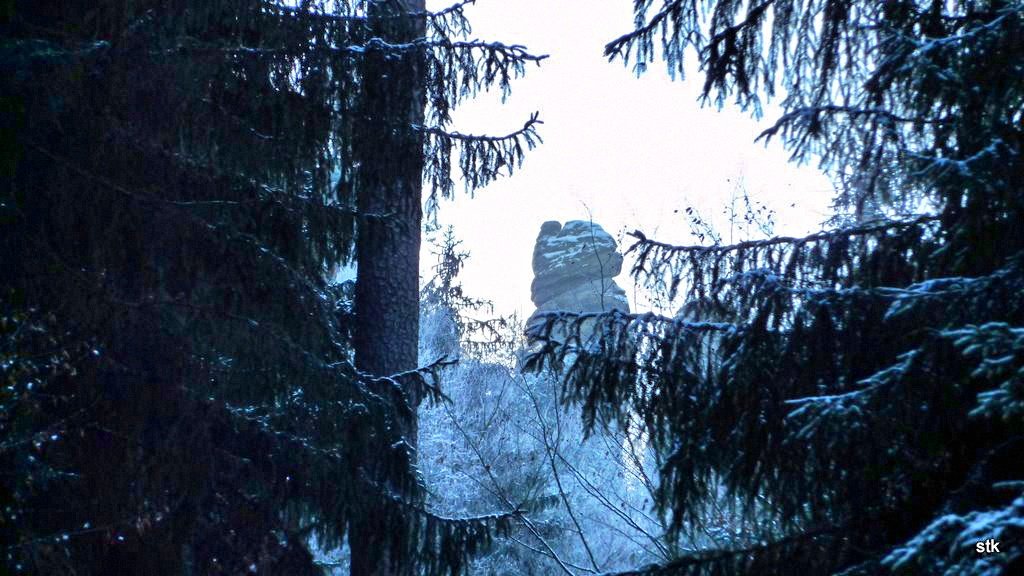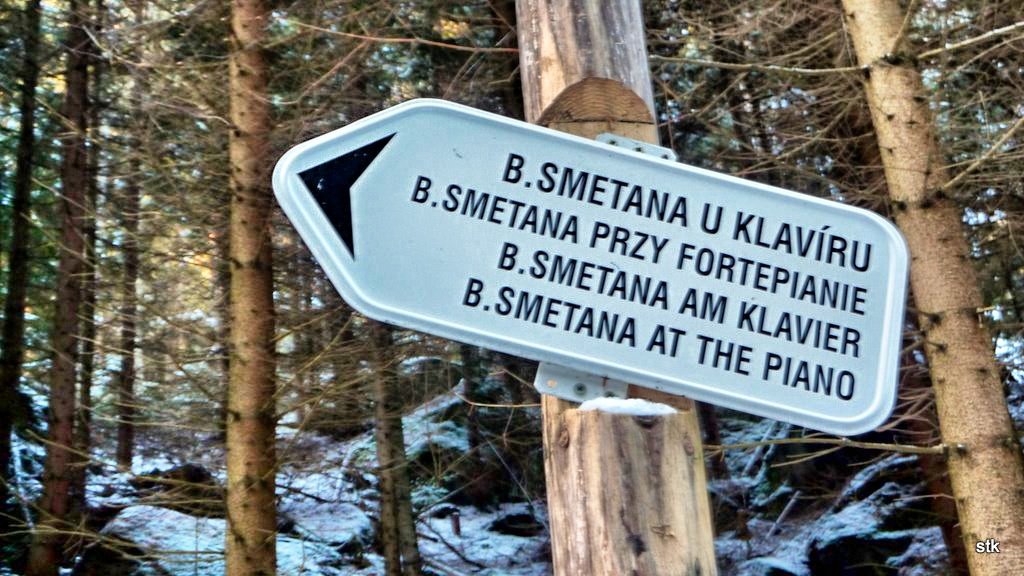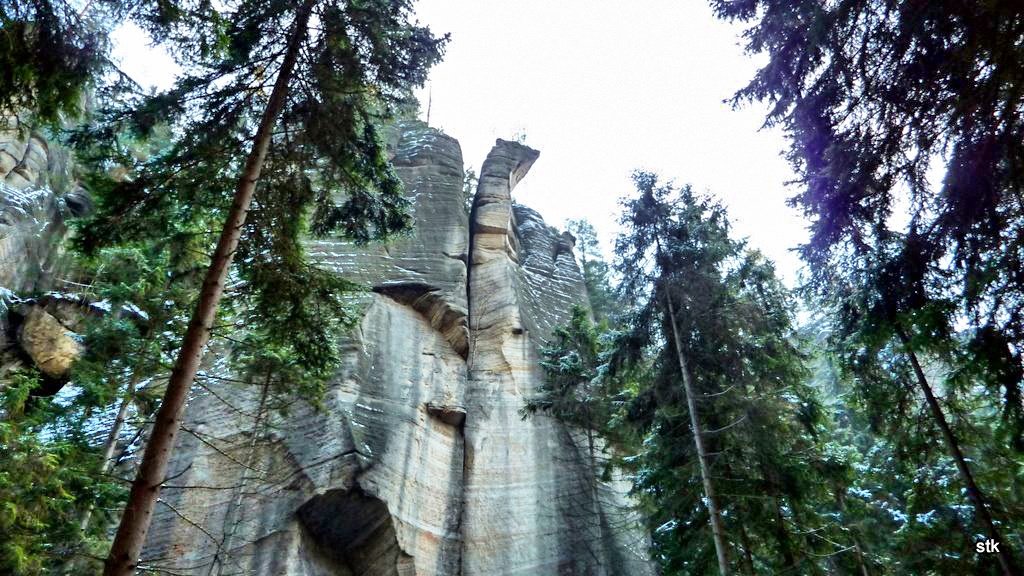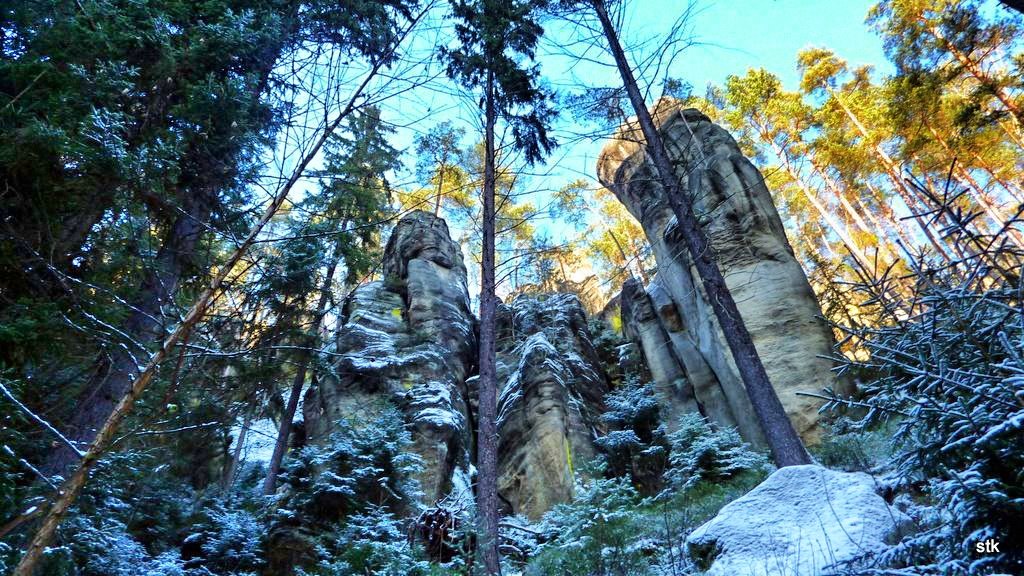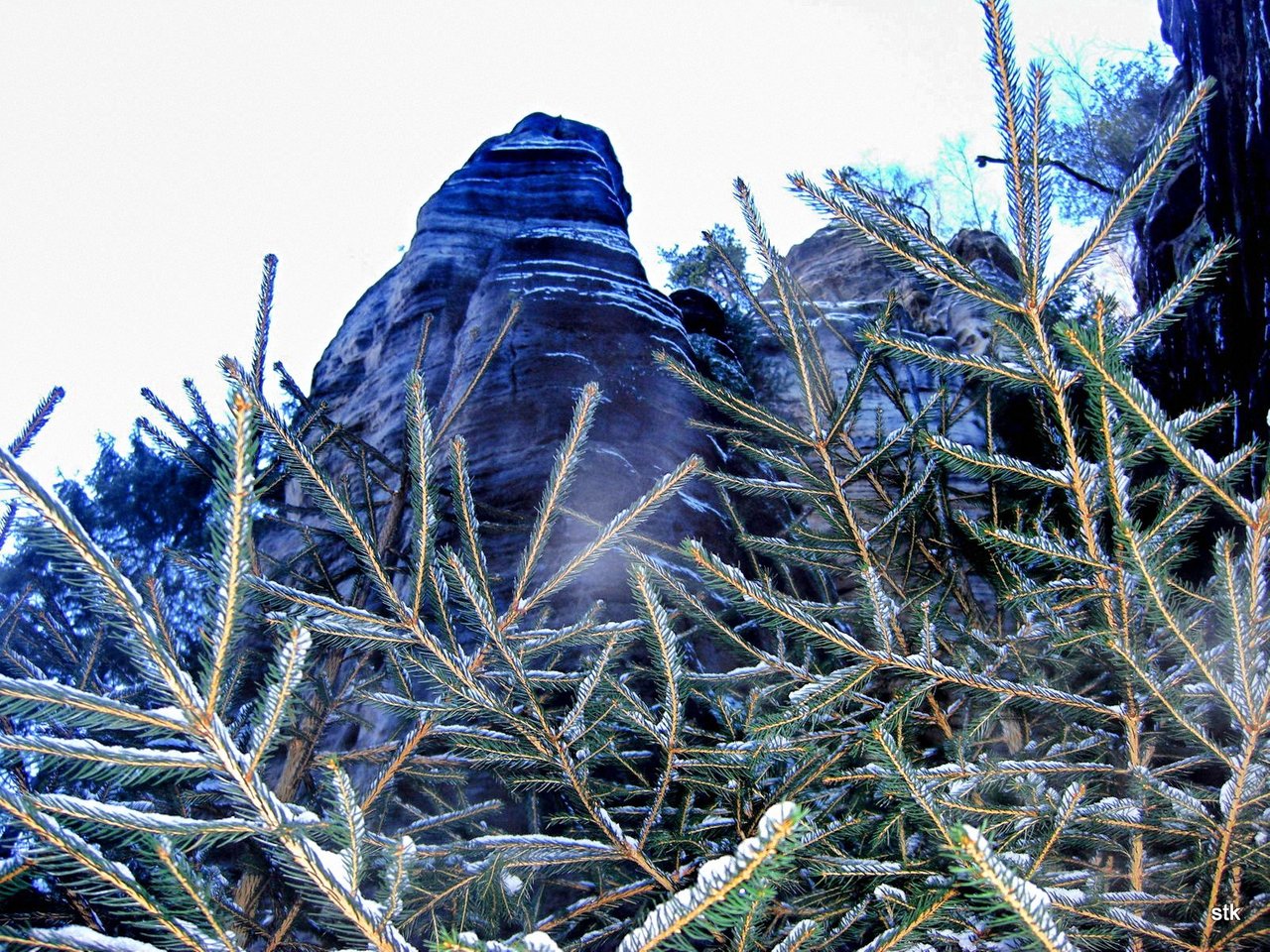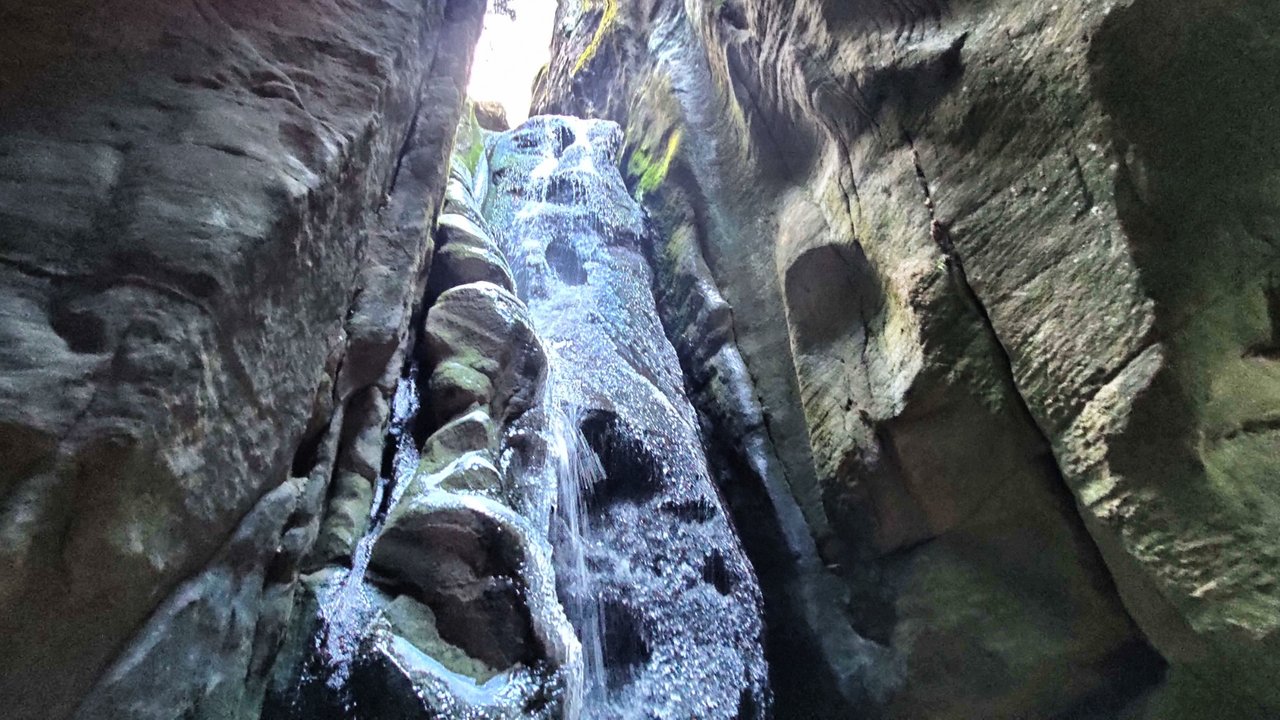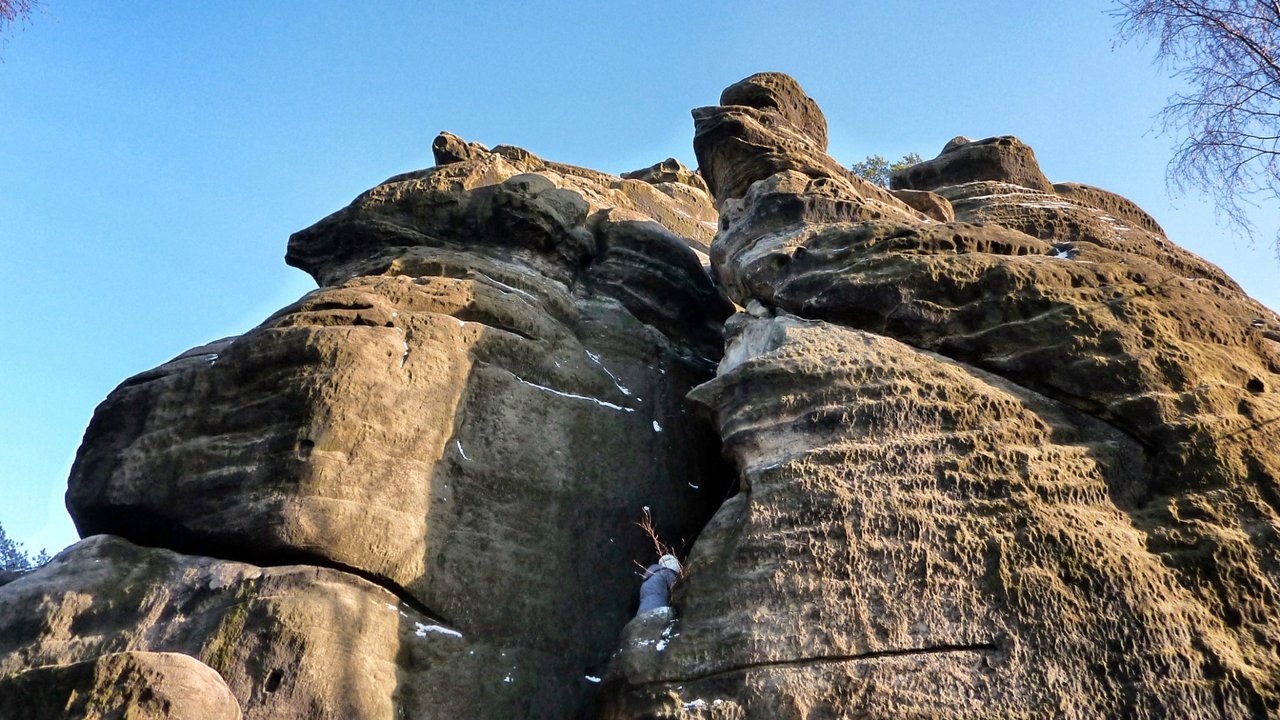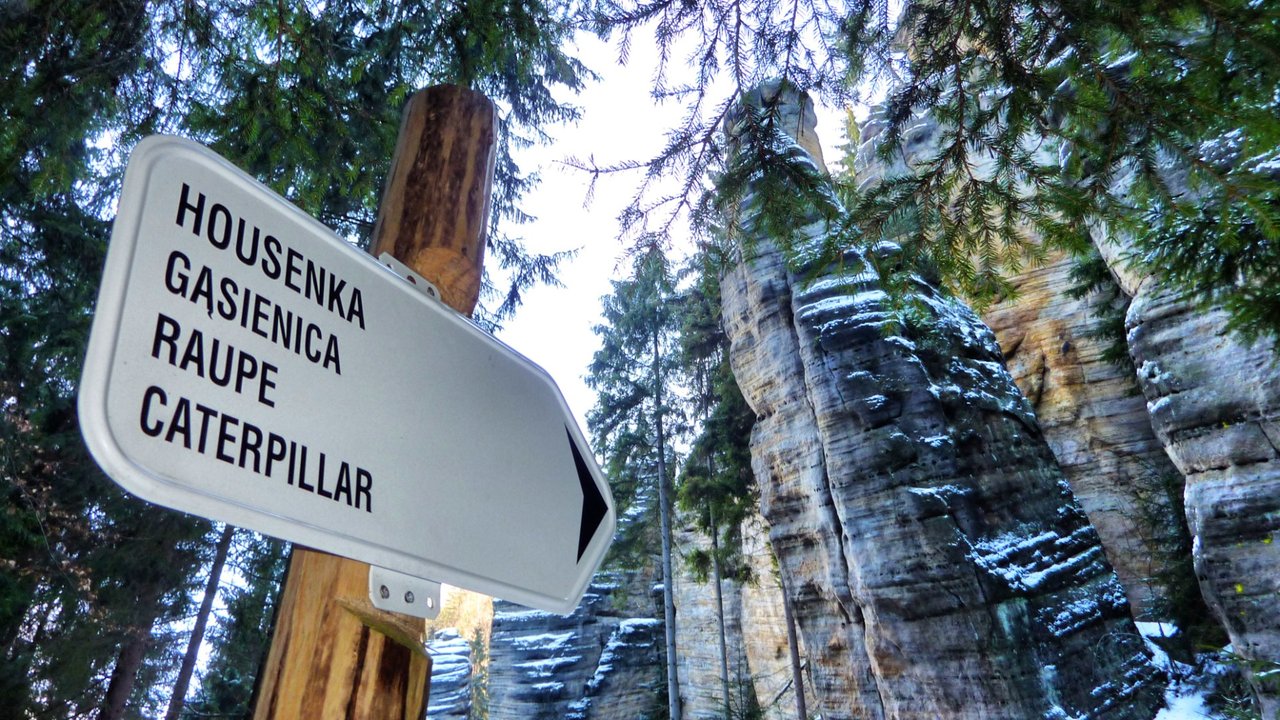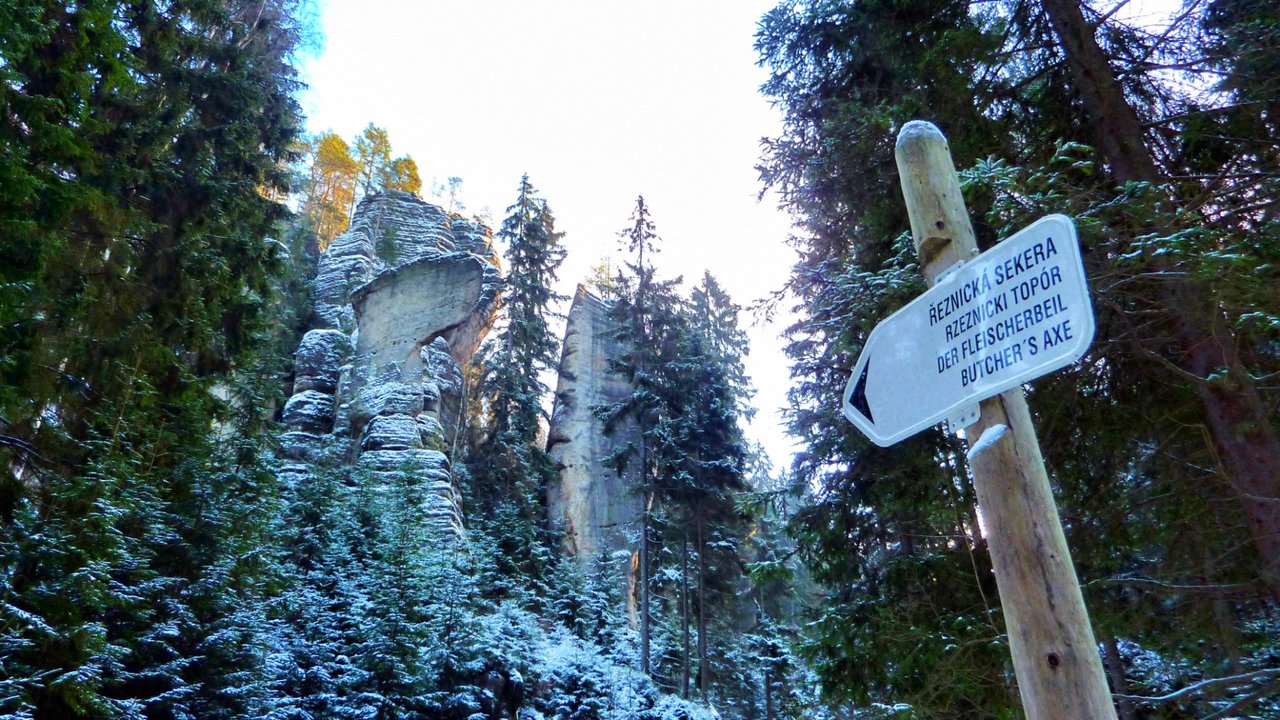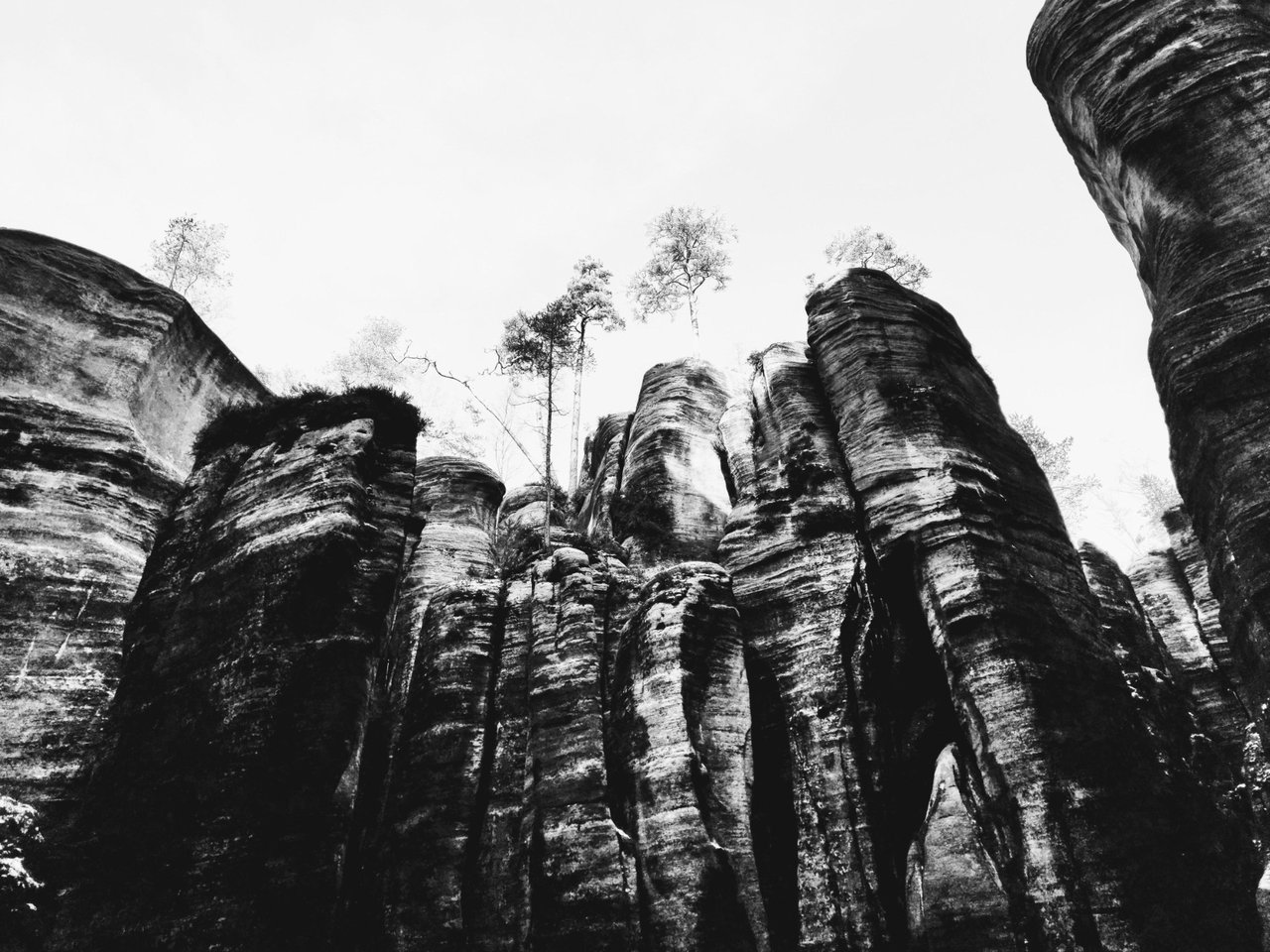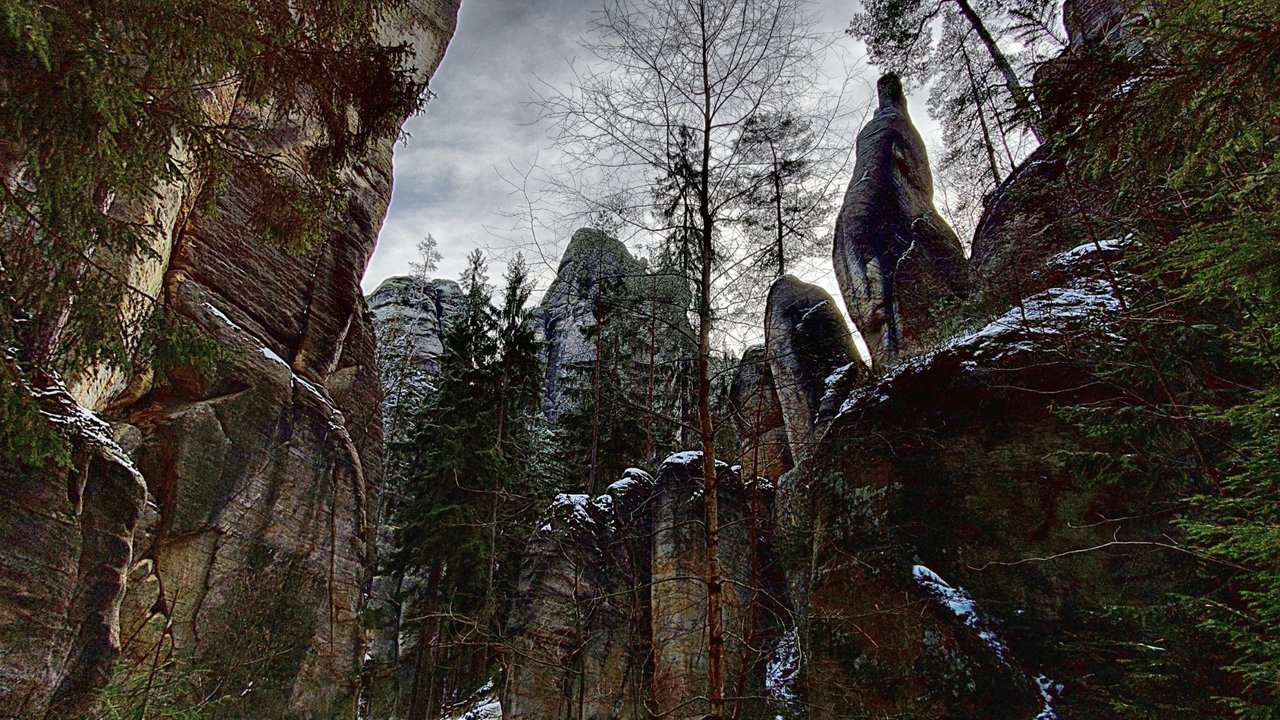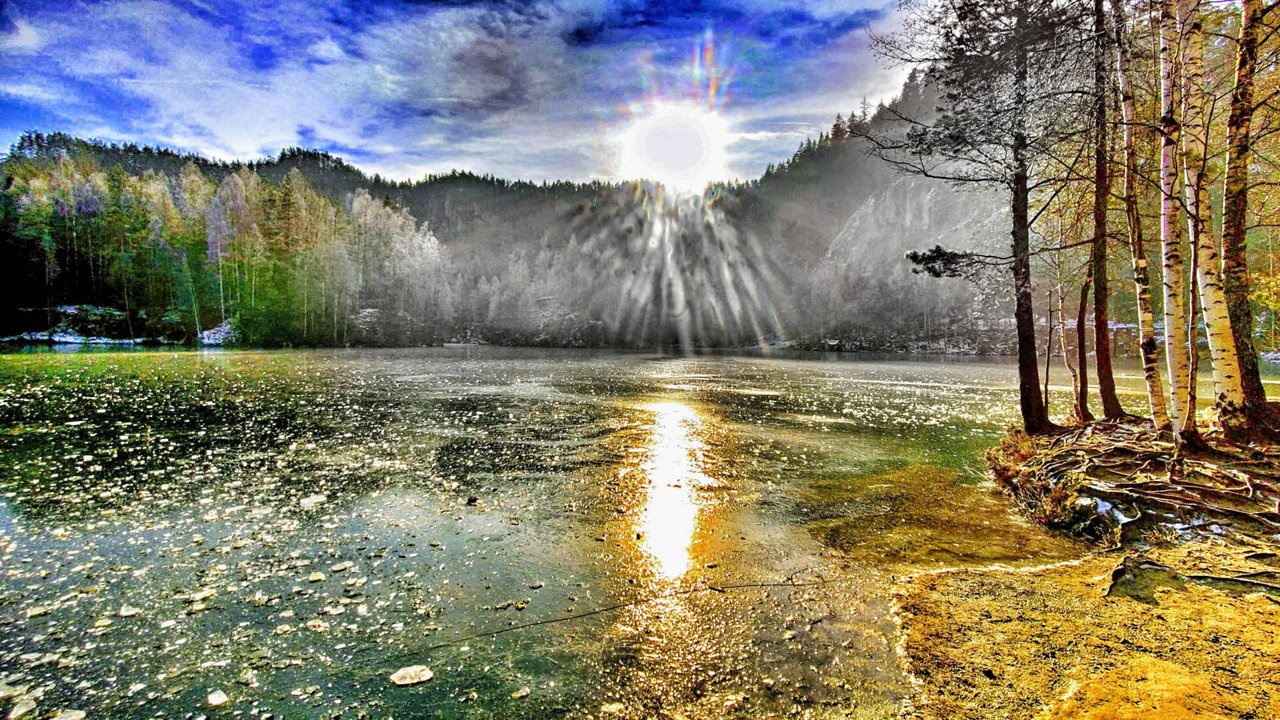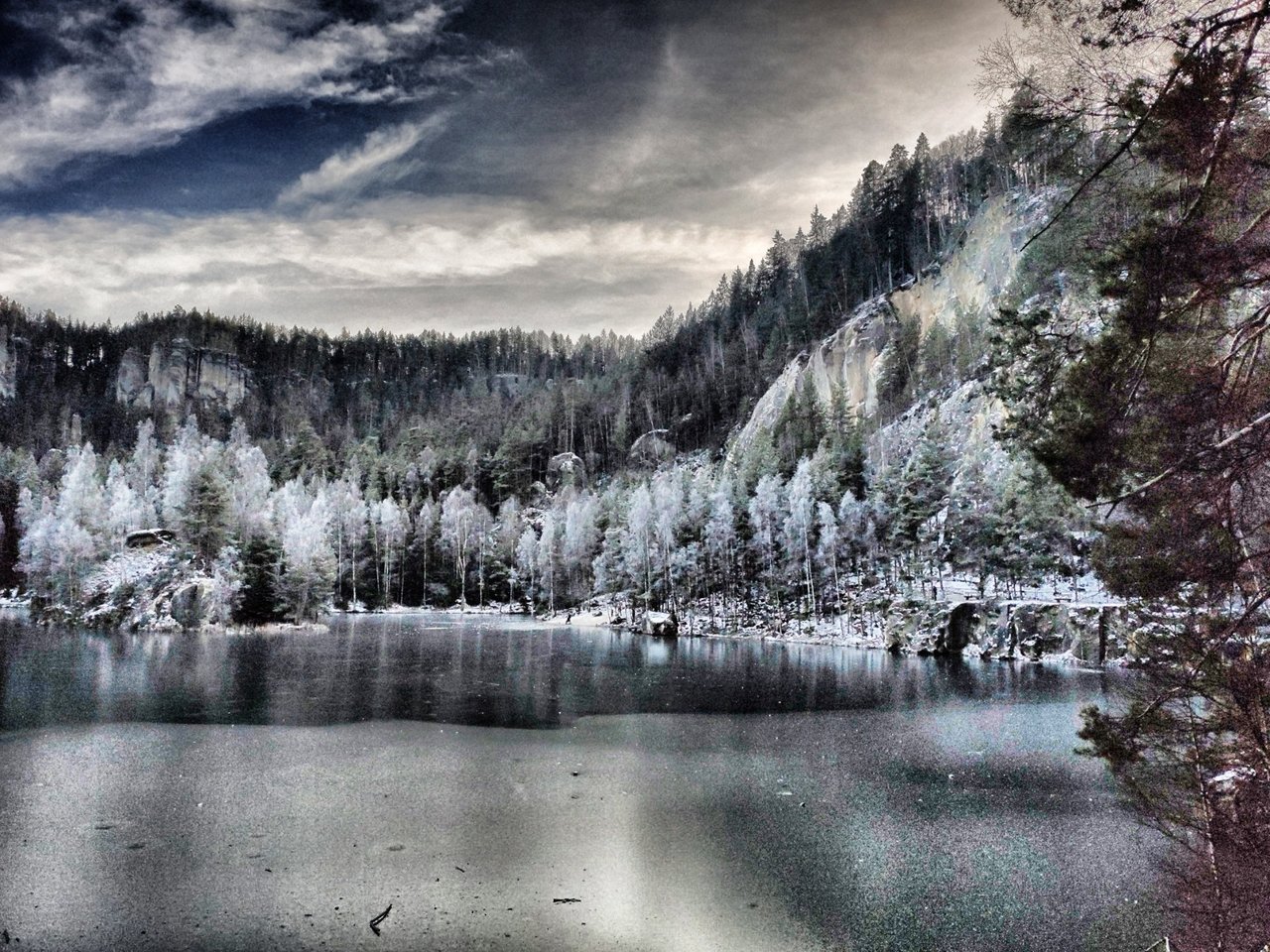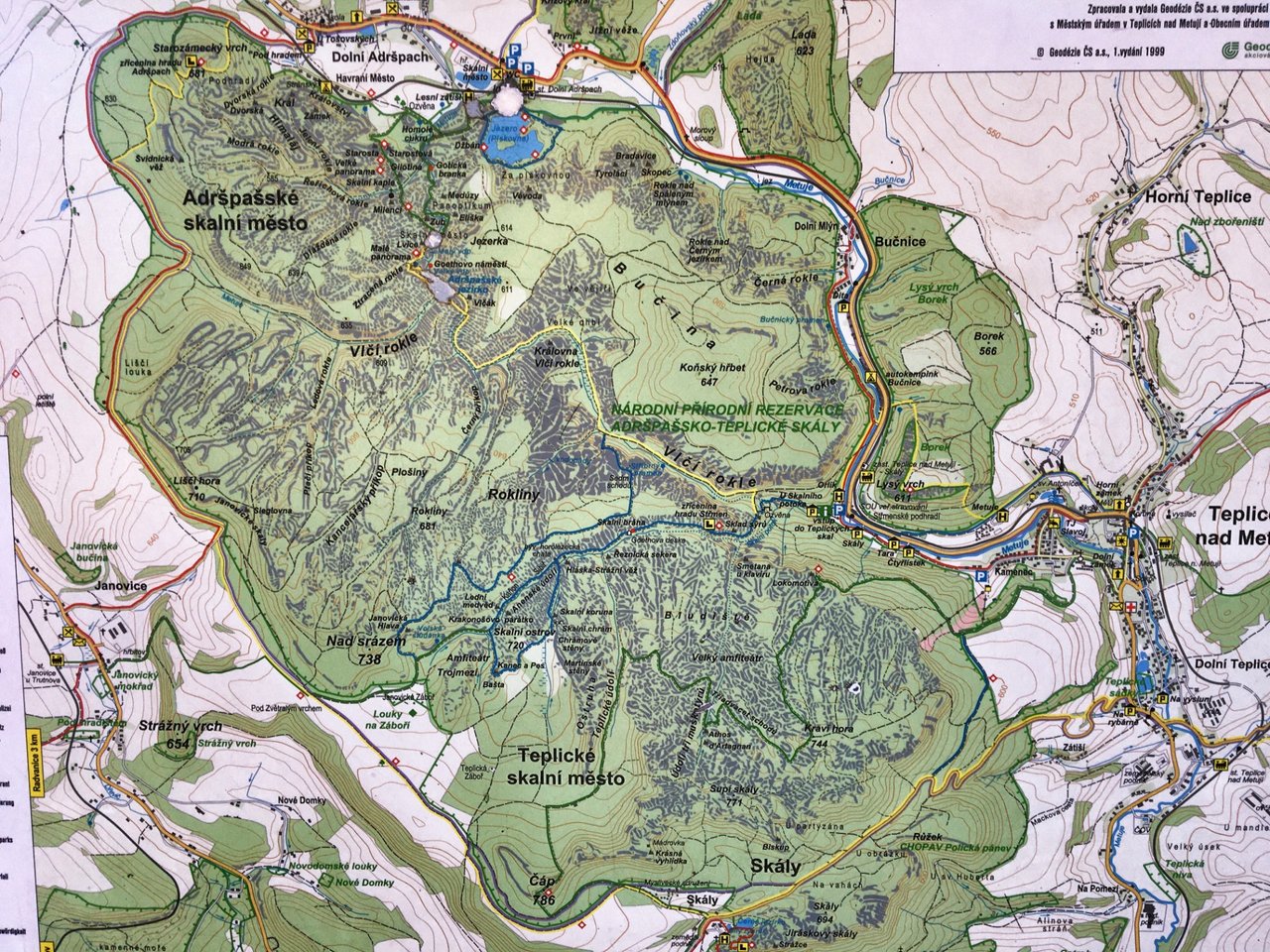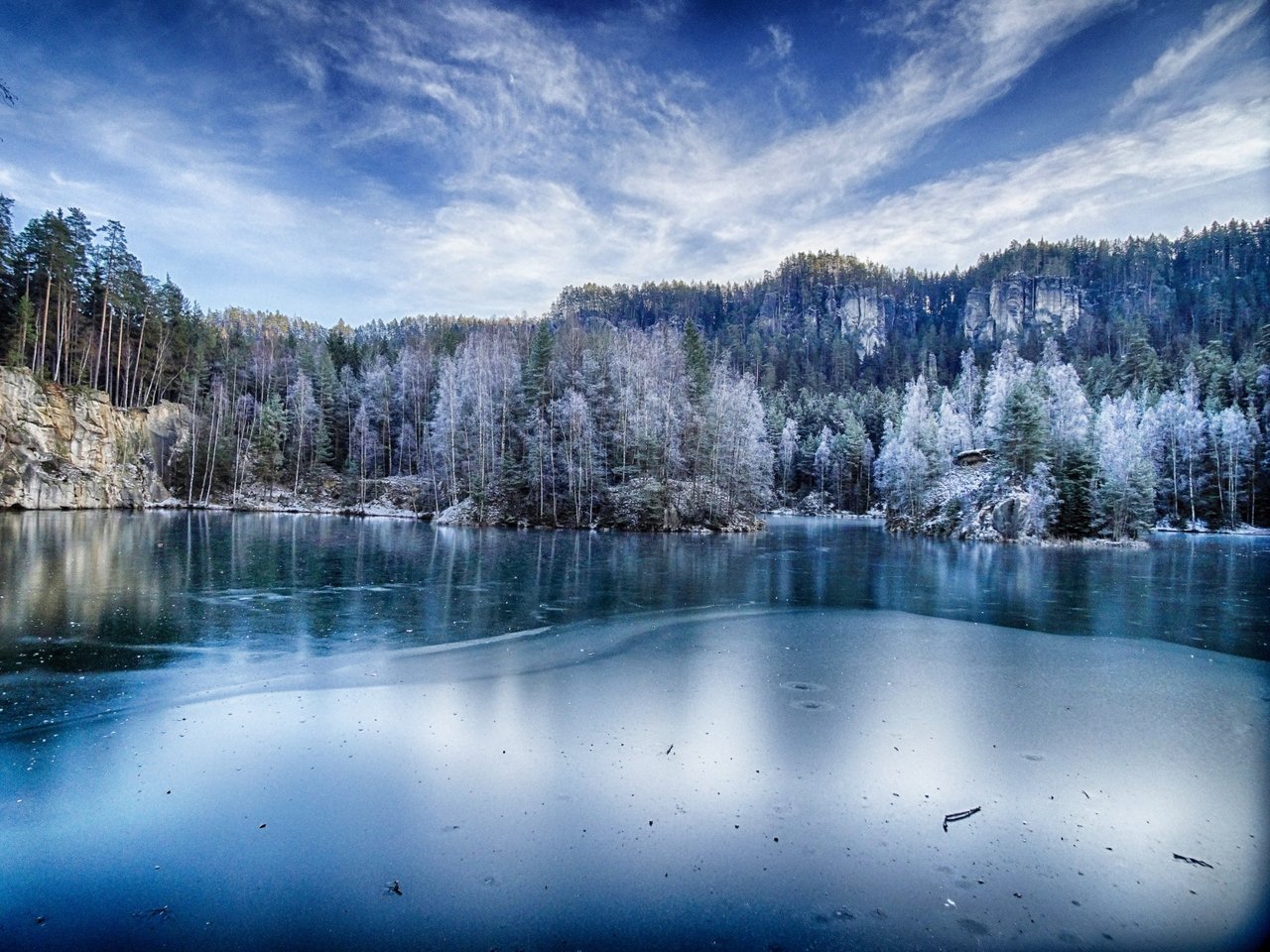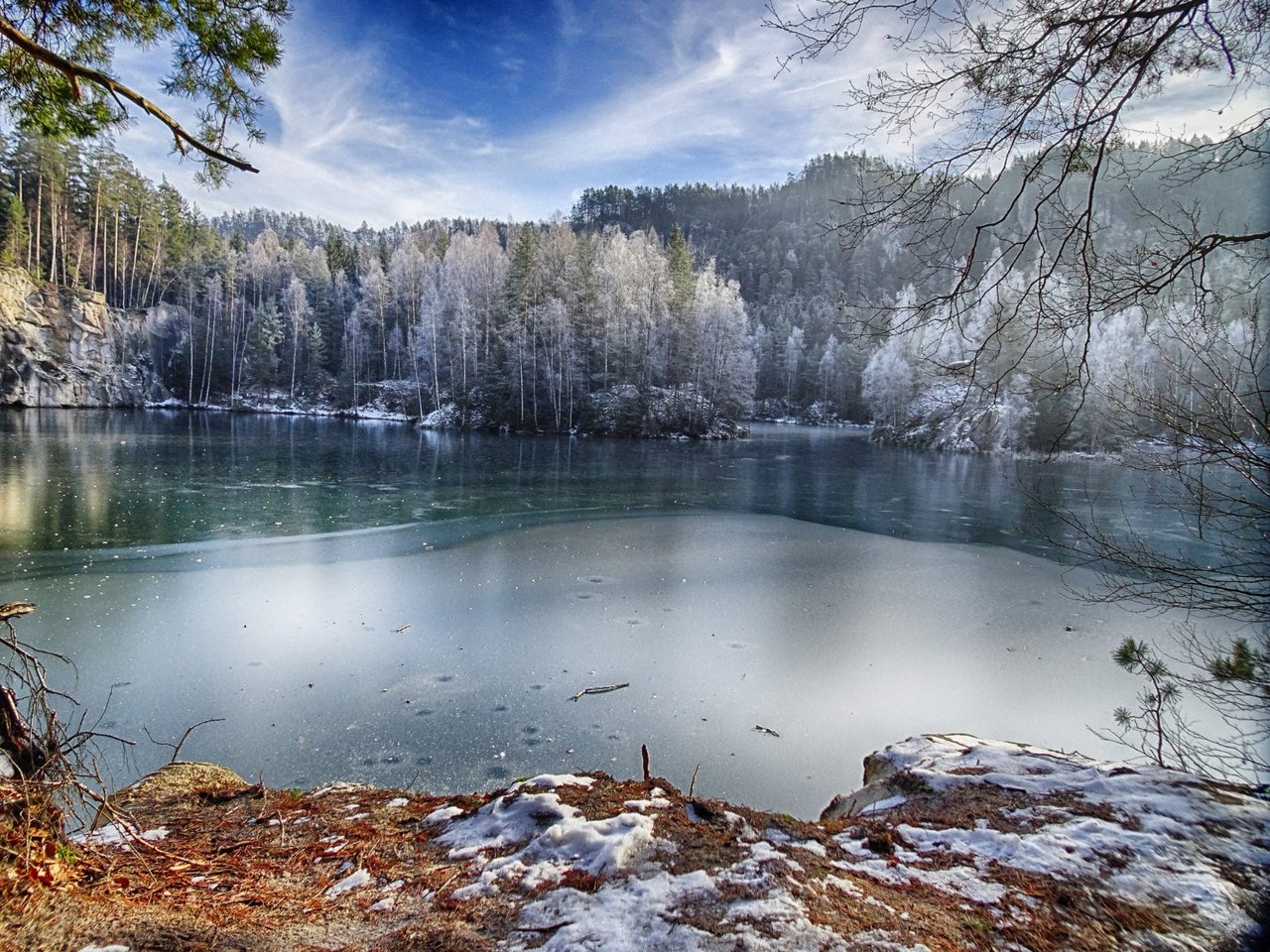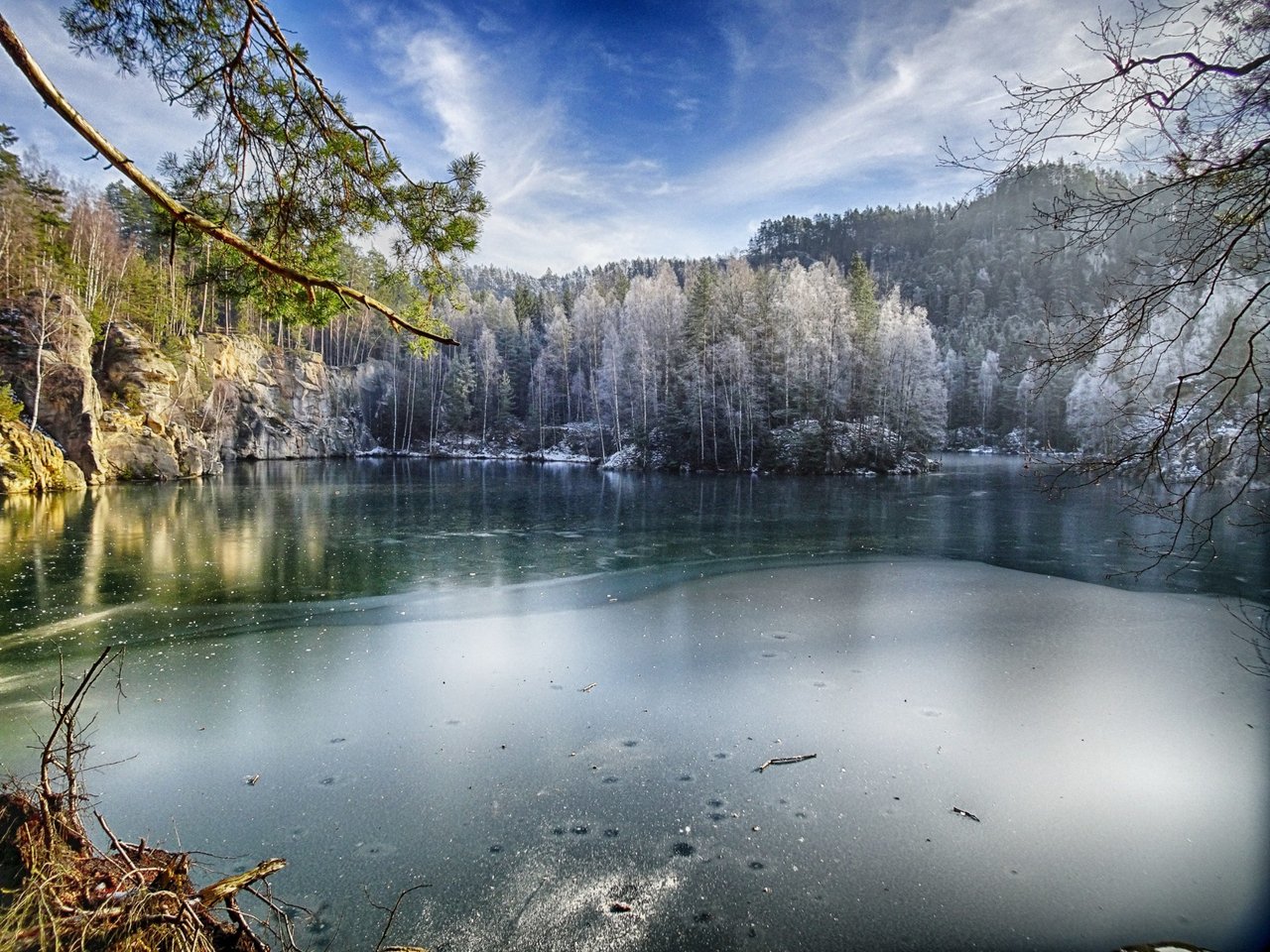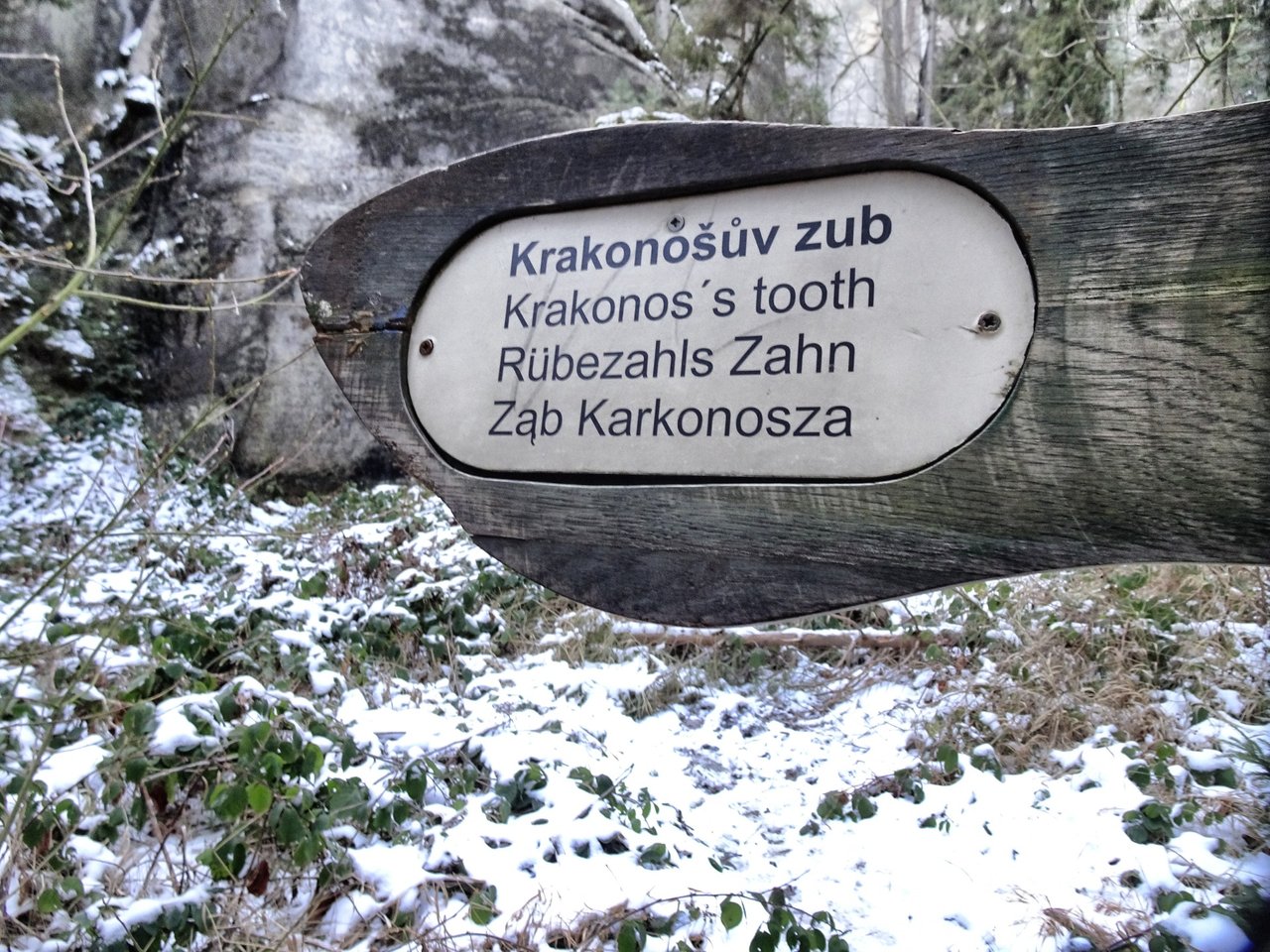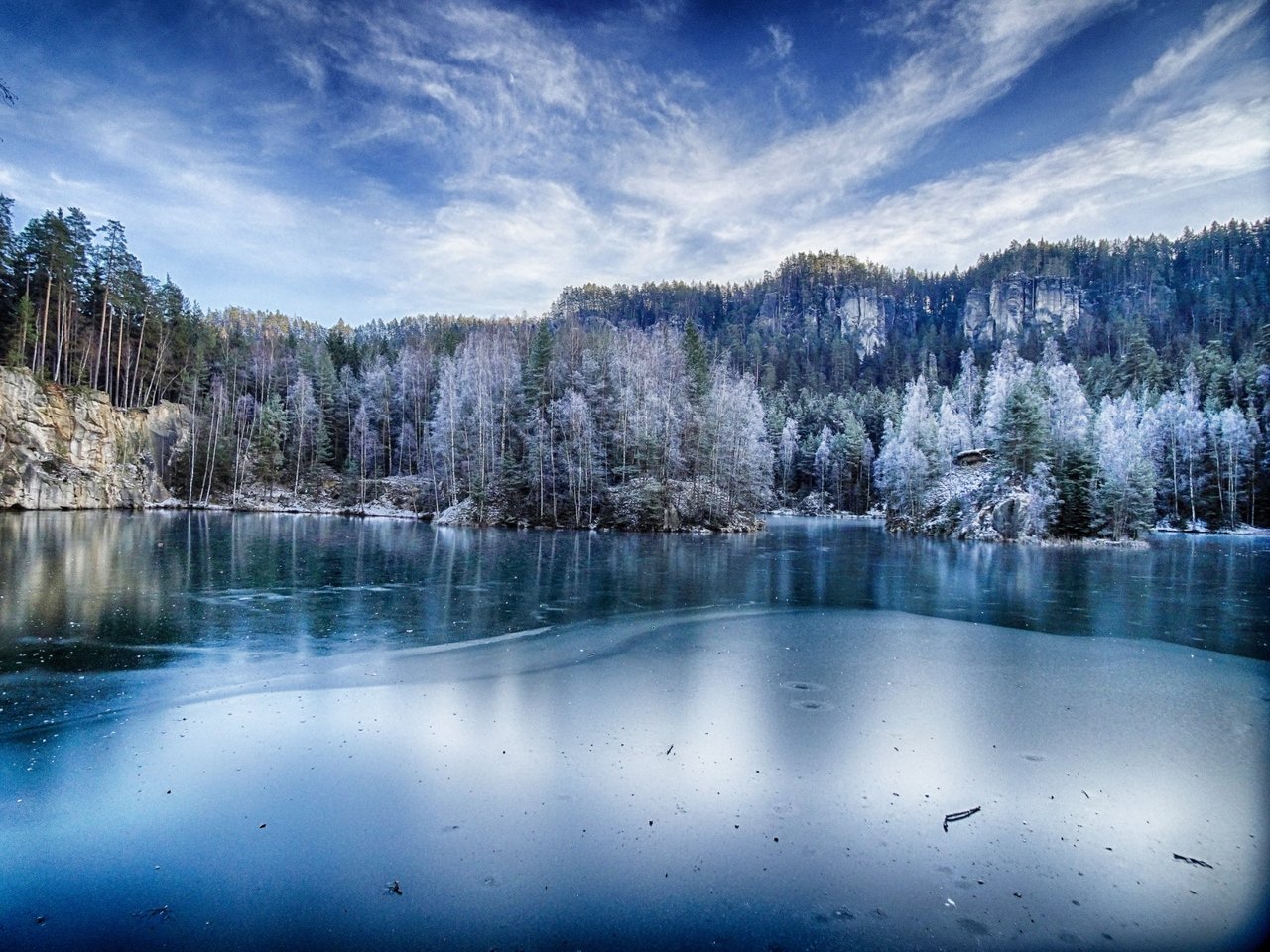After weeks in Poland we're entering now new territory: The border region between Germany, Poland and the Czech Republic is a widely unknown region for tourists, but worth some expeditions. 35 kilometers away from the giant "Projekt Riese", the last Nazi-fortress, we found a nature beauty: The Rocktown of Adersbach.
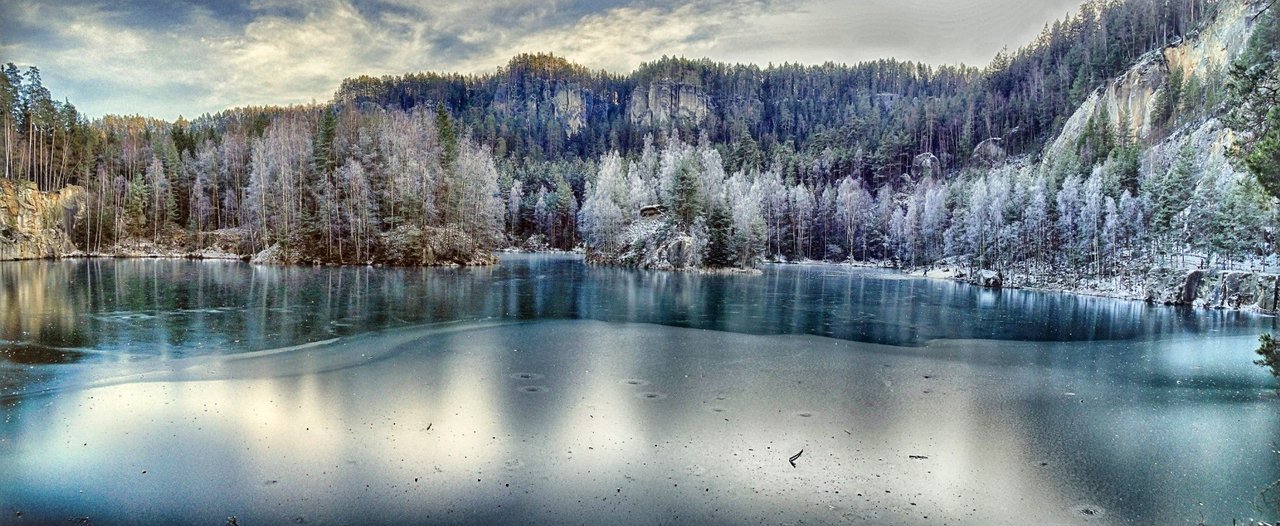 The magic lake
The magic lake
There are thousands of rock towers through which you walk, your gaze directed upwards, where they pierce the sky like needles. In the Adersbach-Weckelsdorfer Rocktown (Adršpašsko-teplické skály) nature reserve, not far from the German border, enchanted nature and breathtaking views await you. Here stands a more than 80 meters high stone of young lovers, next to it is a 16 meters high waterfall. You walk through a rocky alley just 50 centimeters wide and come across a picturesque small lake with crystal clear water, which in winter is thickly iced over so that the sunlight shines as if in a mirror.
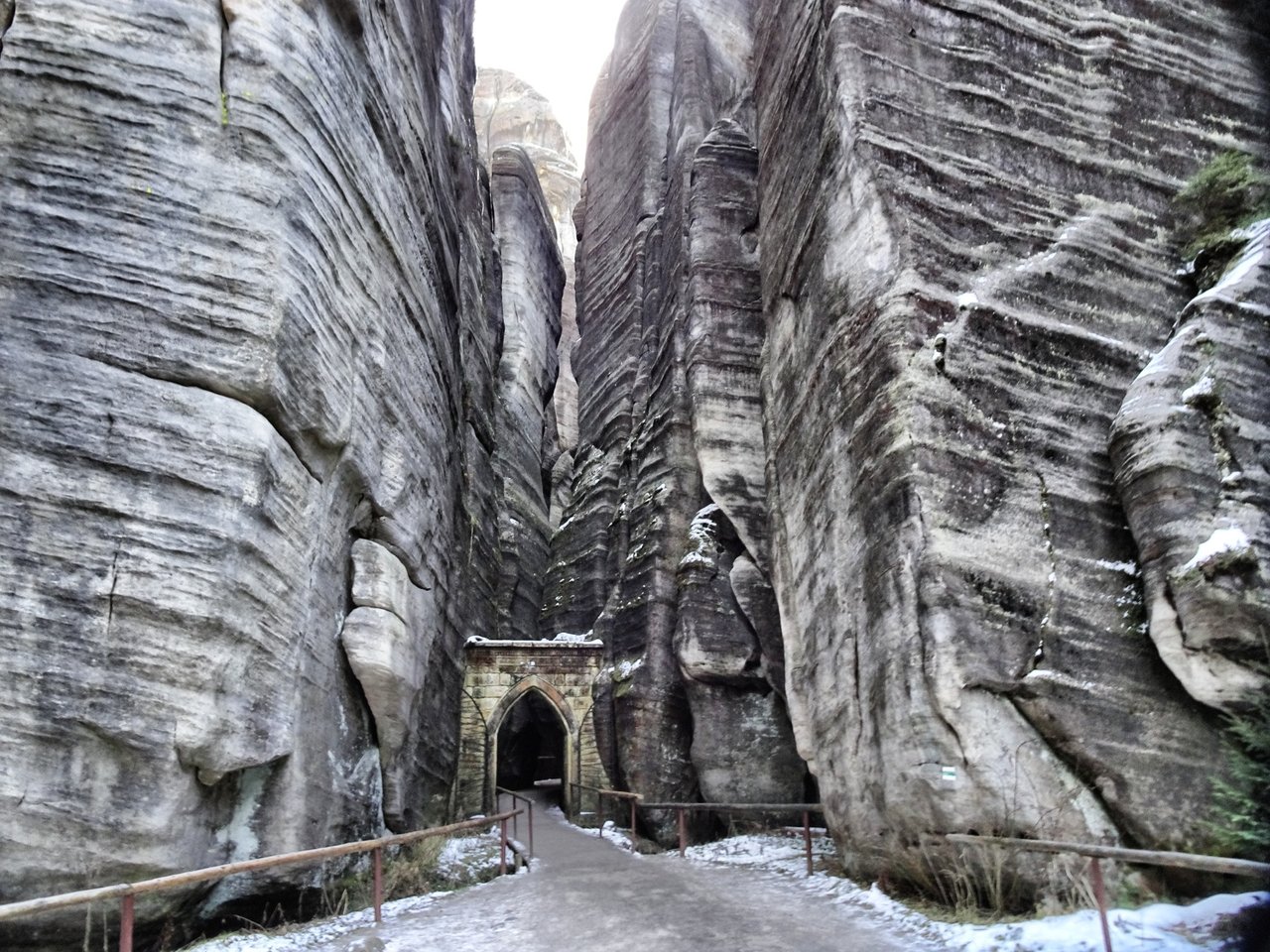 Door to the rock town
Door to the rock town
Sun like in a mirror
The Adršpašsko-Teplické skály (Adersbach-Weckelsdorf Rocks) are a grouping of sandstone rocks unlike any other. It is a landscape that enchants at first sight. It is located near Adršpach (Adersbach) and Teplice (Weckelsdorf) in a nature reserve in the Broumovská Hills (Broumovská vrchovina) in the Czech Republic, about 500 meters above sea level. The Johnsdorf Wolf Gorge (Janovická Vlčí rokle), through which the Metuje River flows, separates the Weckelsdorf Rock Town from the smaller Adersbach Rock Town. The area of the rock towns covers a total of 17.7 square kilometers. The beauty of the rock town came with the water.
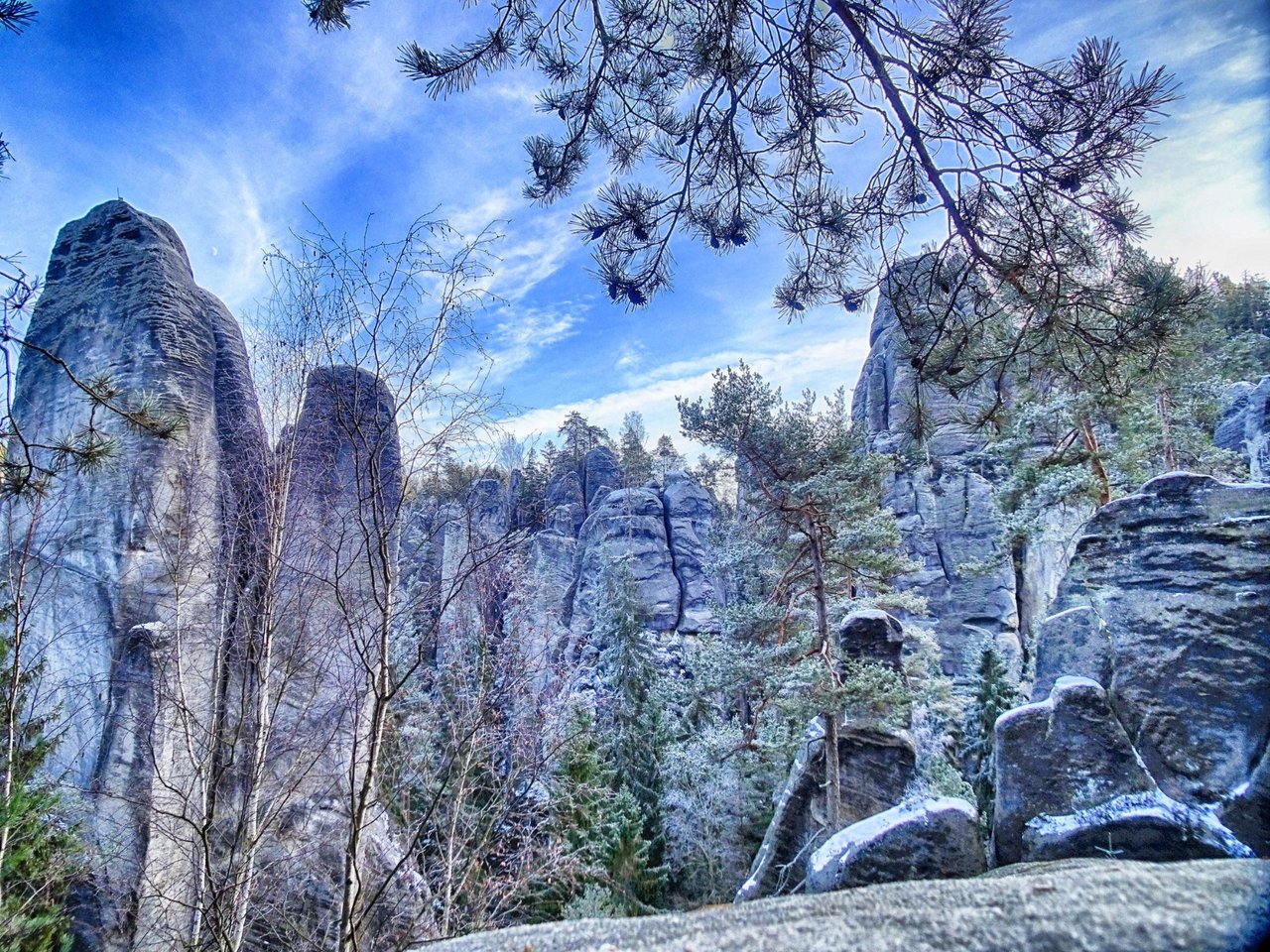 The sky is the limit
The sky is the limit
Beauty comes with the water
These rocks were already here when Europe was still under a layer of ice. The rock city is about 89 million years old, washed out by the force of a sea that has long since disappeared. Where today the lovers stretch into the sky, there was once the primeval seabed. Its floods washed out the stones, the waves and currents created with the power of the water the present shape of the Adersbach rock city.
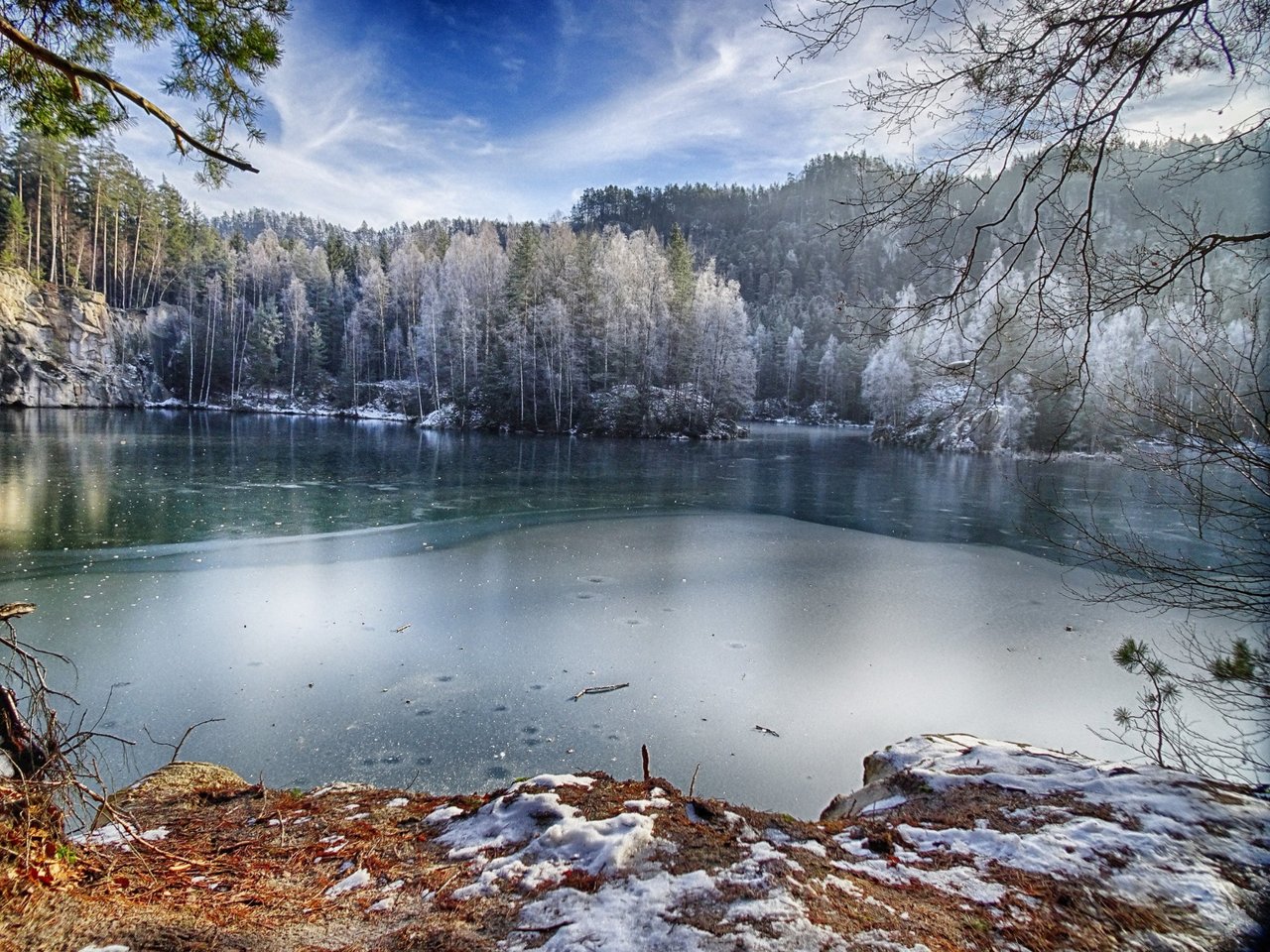 It's icy on the lake
It's icy on the lake
One walks like a child through the kingdom of the giants, which today are being polished more and more by wind and weather. They formed gorges and ravines, which are up to 100 meters deep. This is also how many rocky outcrops, terraces and hollows with steep walls or caves were formed. The highest mountain is Starozámecký vrch (Old House Mountain).
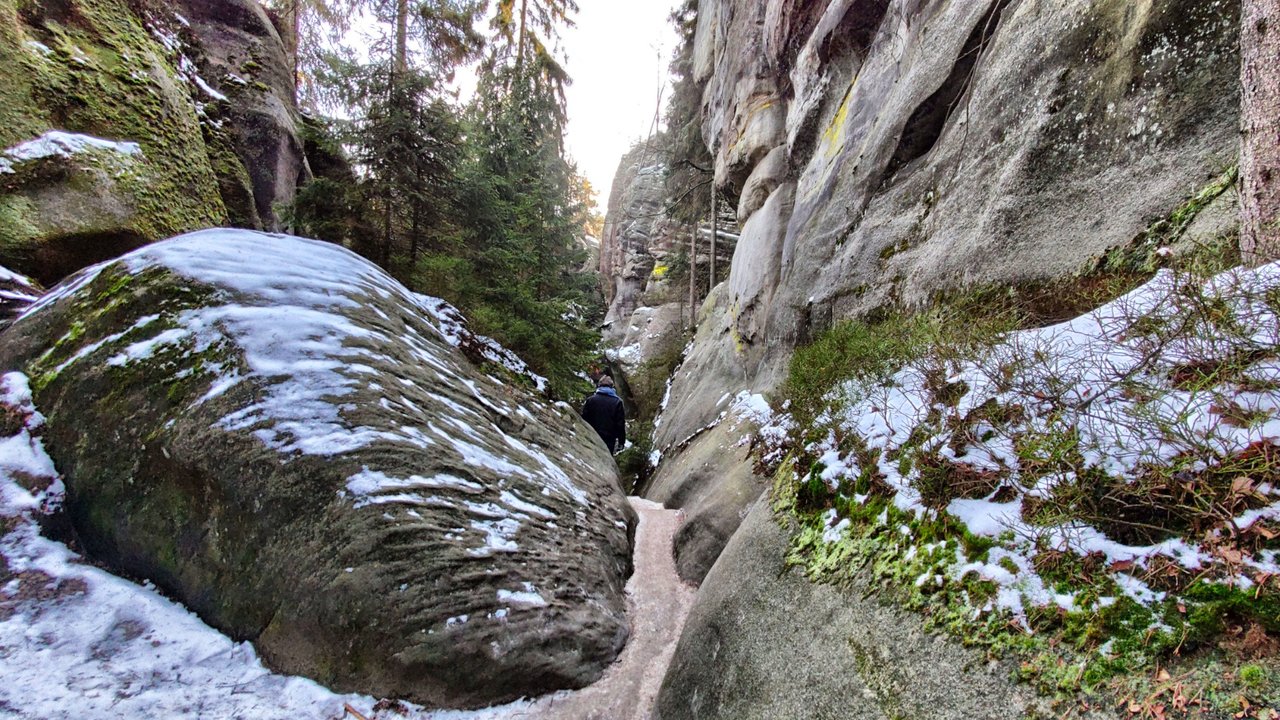 Narrow are the paths
Narrow are the paths
The Metuje River is dammed at the lower exit of the Johnsdorf Wolf Gorge in the Adršpašské jezirko (Rock Pond) and then plunges 16 m deep into a gorge via the Velký Adršpašský vodopád (Great Adersbach Waterfall); below it is the Malý Adršpašský vodopád (Small Adersbach Waterfall) with a drop of four meters.
The sea retreated
Geologically, all this is as interesting as visually. Already in the younger Paleozoic a depression was formed here, where the sea and the rivers left their deposits. The sea subsequently retreated several times, and the mainland rose and folded due to movements of the earth's crust.
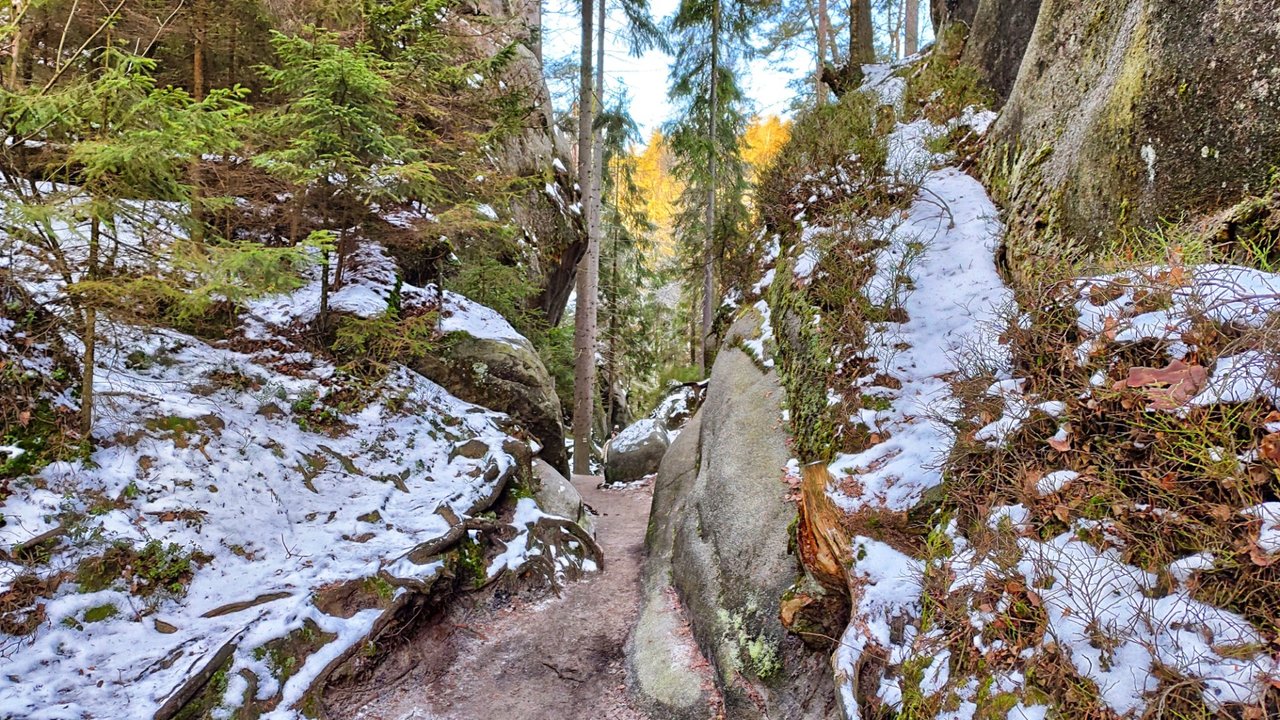 Rocks on the left, rocks on the right
Rocks on the left, rocks on the right
Later, the sea returned and layers of sand and marl were deposited at its bottom. By their weight and by chemical processes, the free sand grains combined to form sandstone, which became the rock towers when the sea finally retreated forever.
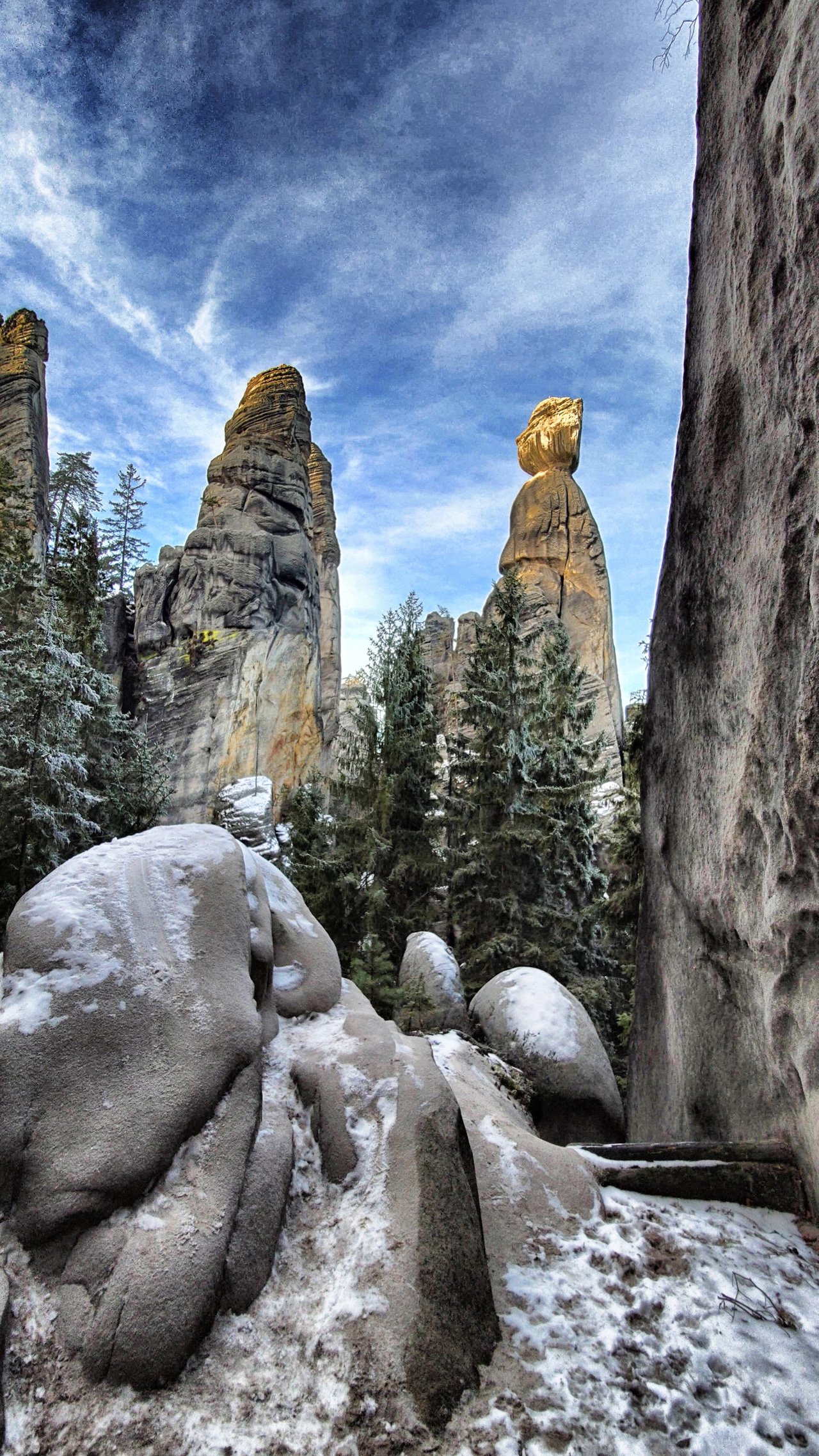 The are sometimes like needles
The are sometimes like needles
Since then, natural forces such as frost, flowing water, wind and sun continue to scratch the statues, which slowly, very slowly continue to change.
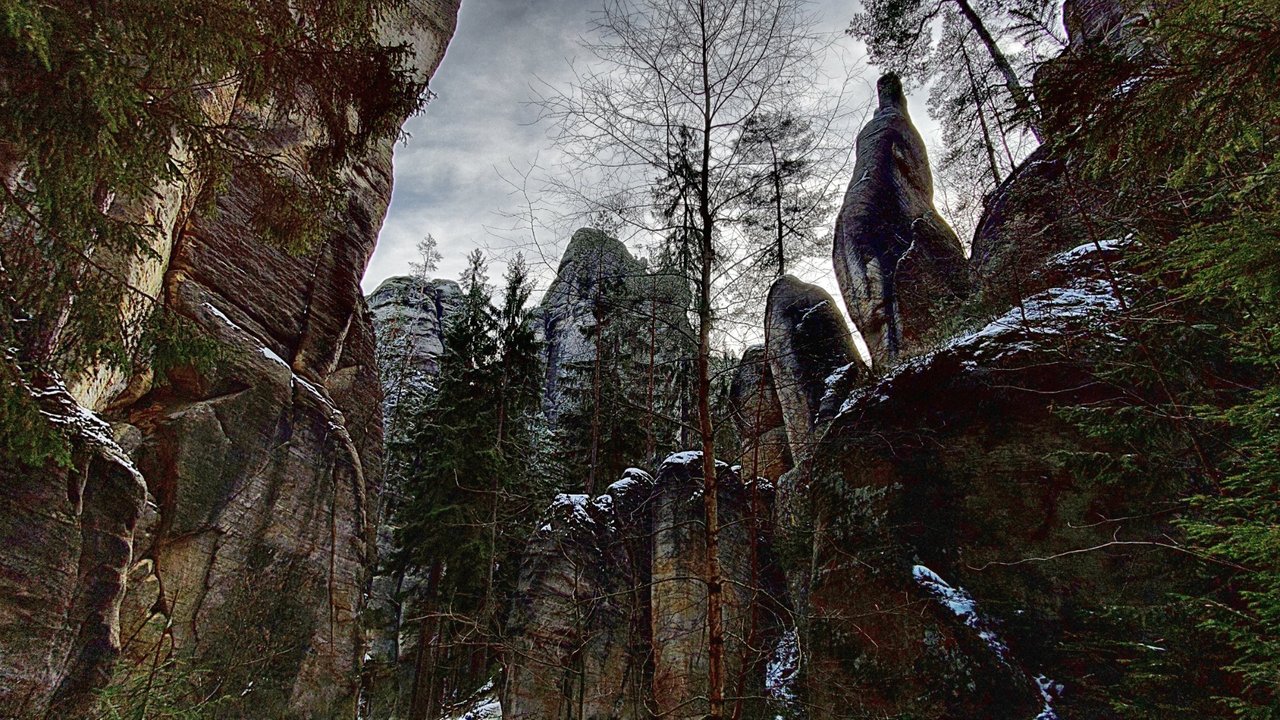 Dark is is down there
Dark is is down there
Admittedly, one human lifetime is not enough to see the changes in form. The sandstone rocks already had their present shape when the famous German poet Johann Wolfgang von Goethe visited. Before that, the local population had eliminated the previously impenetrable wilderness around the area, although it had always given them safe shelter in times of war.
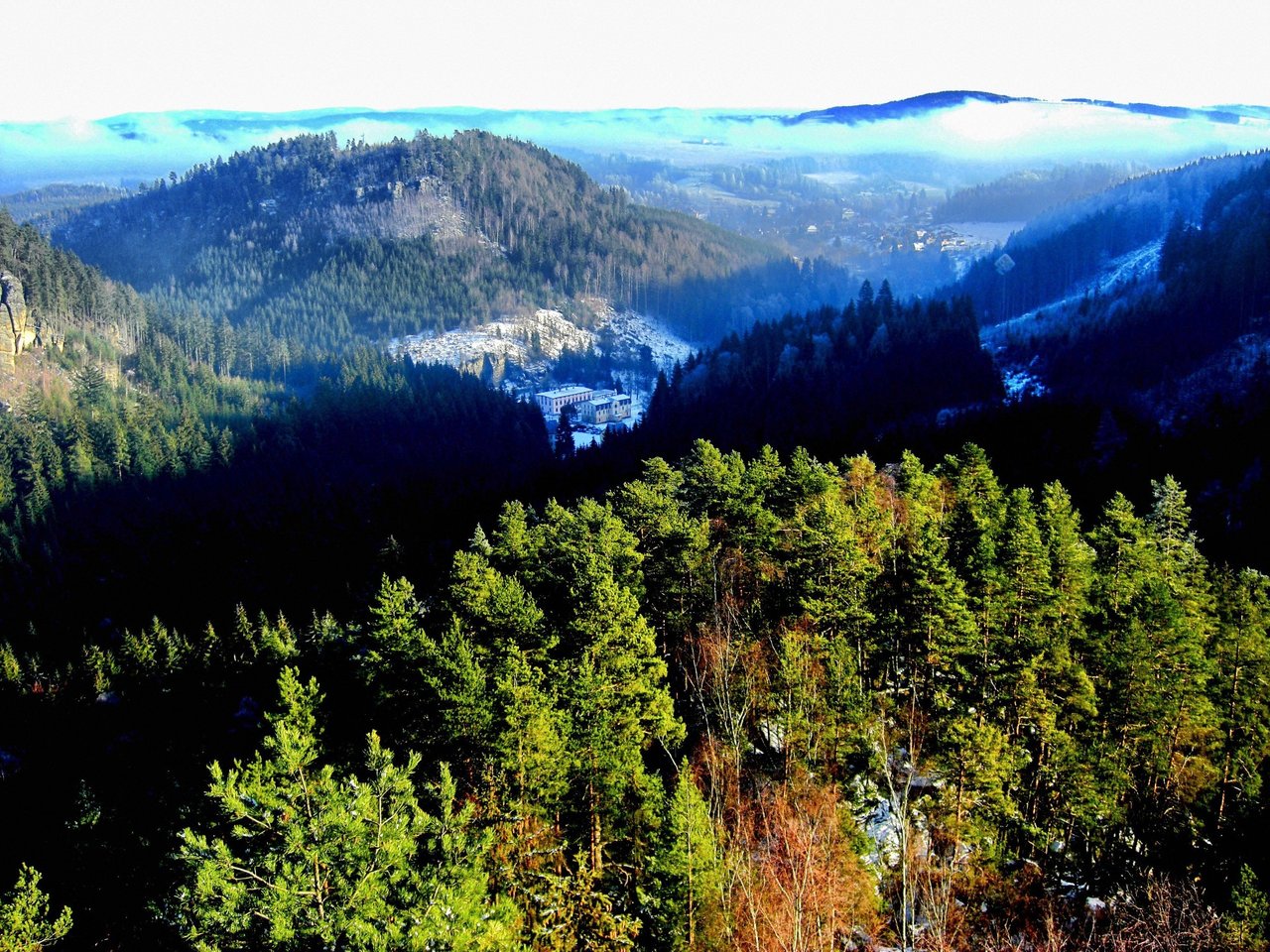 But from avbove you will the the whole landscape
But from avbove you will the the whole landscape
Nature lovers wonder
It was not until the 18th century that the first hikers and nature lovers discovered the rock town. In 1790 Goethe passed by, for a short detour, because the busy poet had only little time and paths between the rocks did not exist at that time. It was only after a huge fire in 1824, which affected the whole rock town, that the rocks were more accessible, and the full beauty of the sandstone formations emerged.
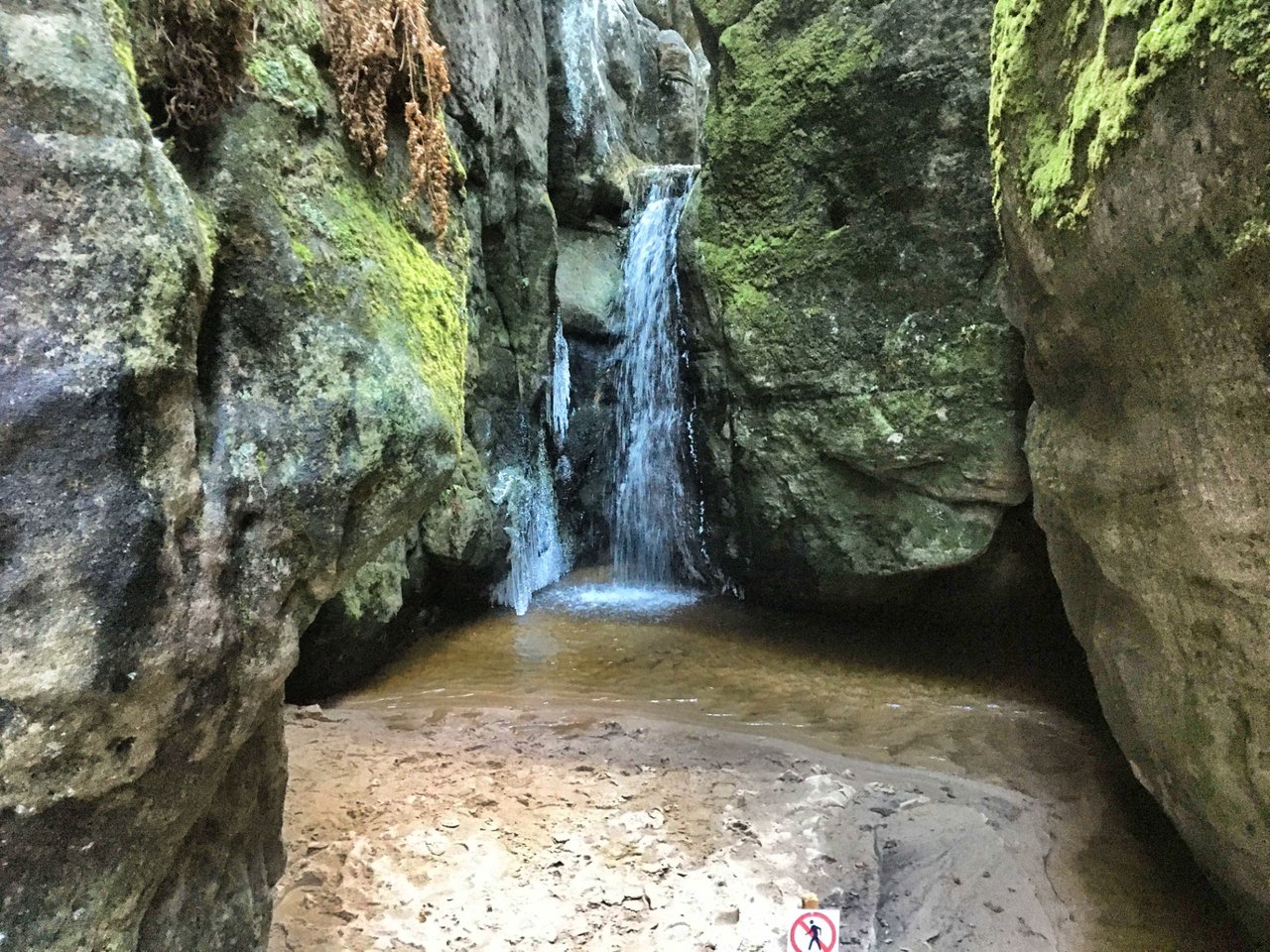 One of the waterfalls
One of the waterfalls
Goethe is remembered today by a bust at the Great Waterfall, Baron Nádherný, who made Adersbach a tourist attraction, is remembered by newly created bridges, paths and trails. There are three main routes through the rock town today, a green and a blue circular route and a yellow route connecting the two circular routes.
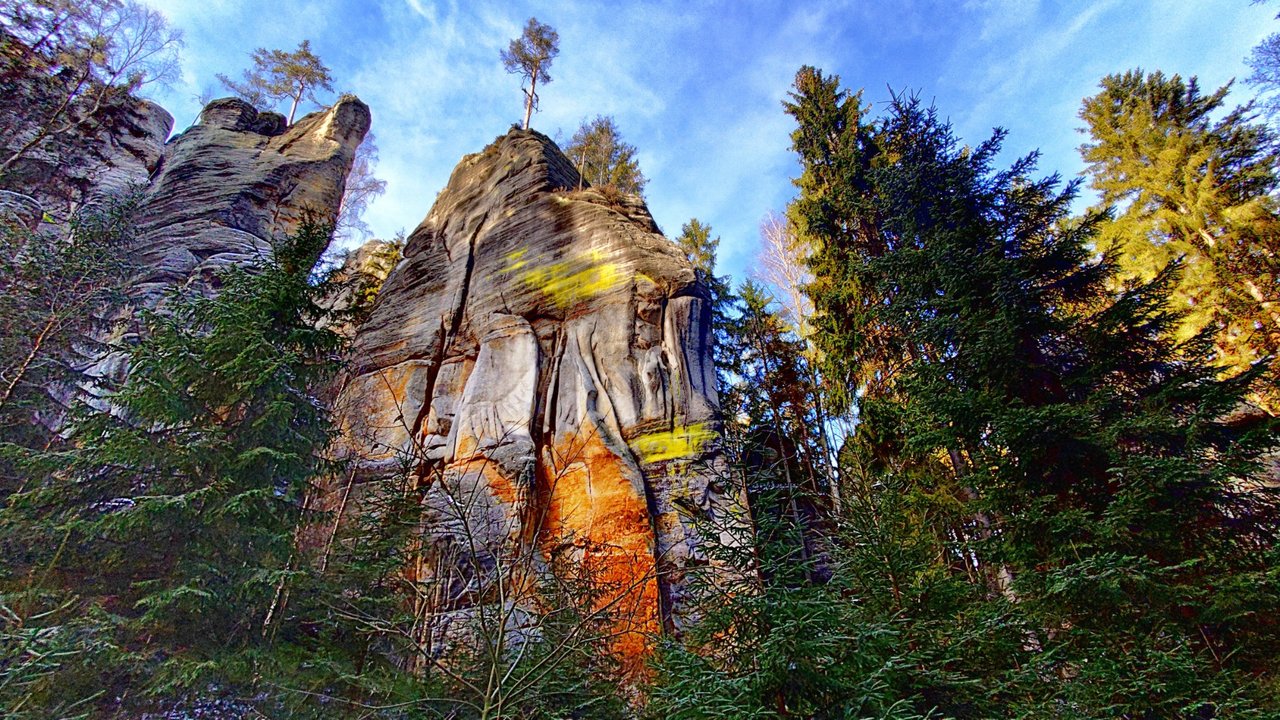 Coloured mountains
Coloured mountains
But be careful: walking the complete circuit means walking almost 30 kilometers! It is simply impossible to do, because it goes up and down stairs, through narrow crevices between the stones, up the towers, along iron ladders and through narrow gorges. It is easy to imagine that in prehistoric times people did not dare to enter here. So smart were they!
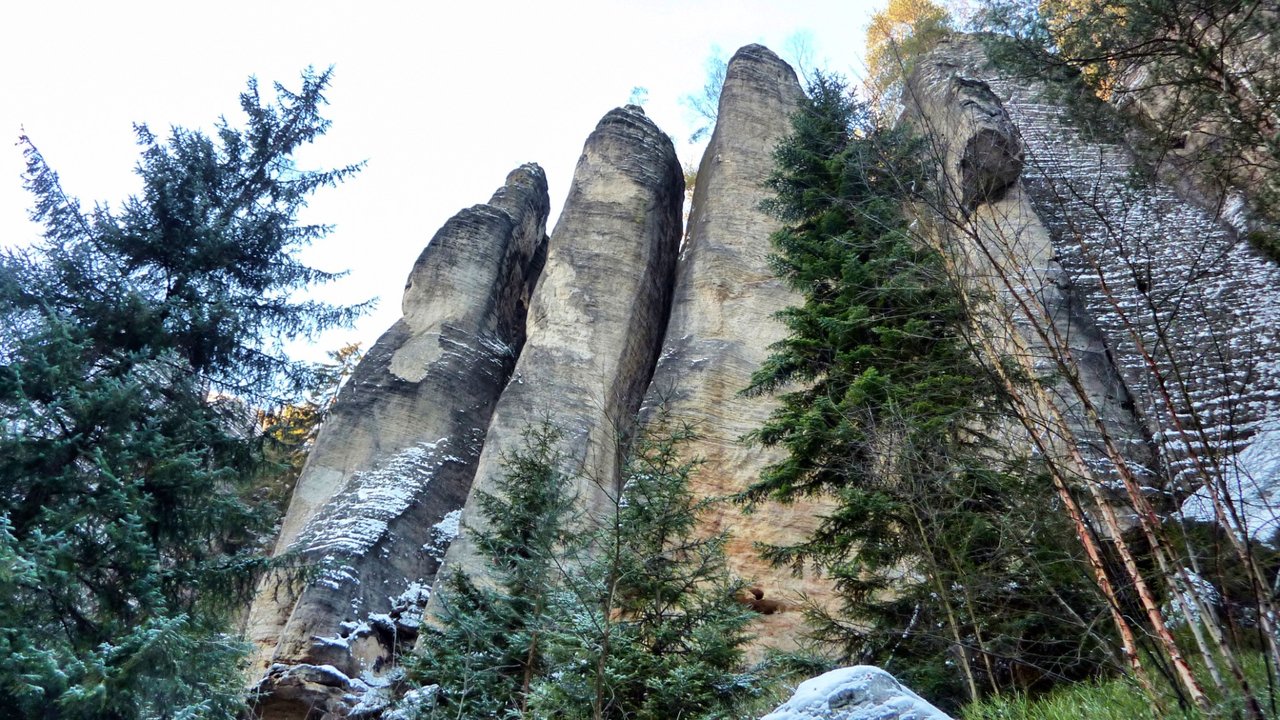 It's al made of sand stone
It's al made of sand stone
Transforming the rocks again
In 1828 the nobleman had bought the nearby castle and discovered the rocky landscape, which now belonged to him. He transformed Adersbach into a place that even emperors and kings liked to visit. For this purpose, he invested large sums in the construction of access roads, in addition to which he created the network of hiking trails that still exists today.
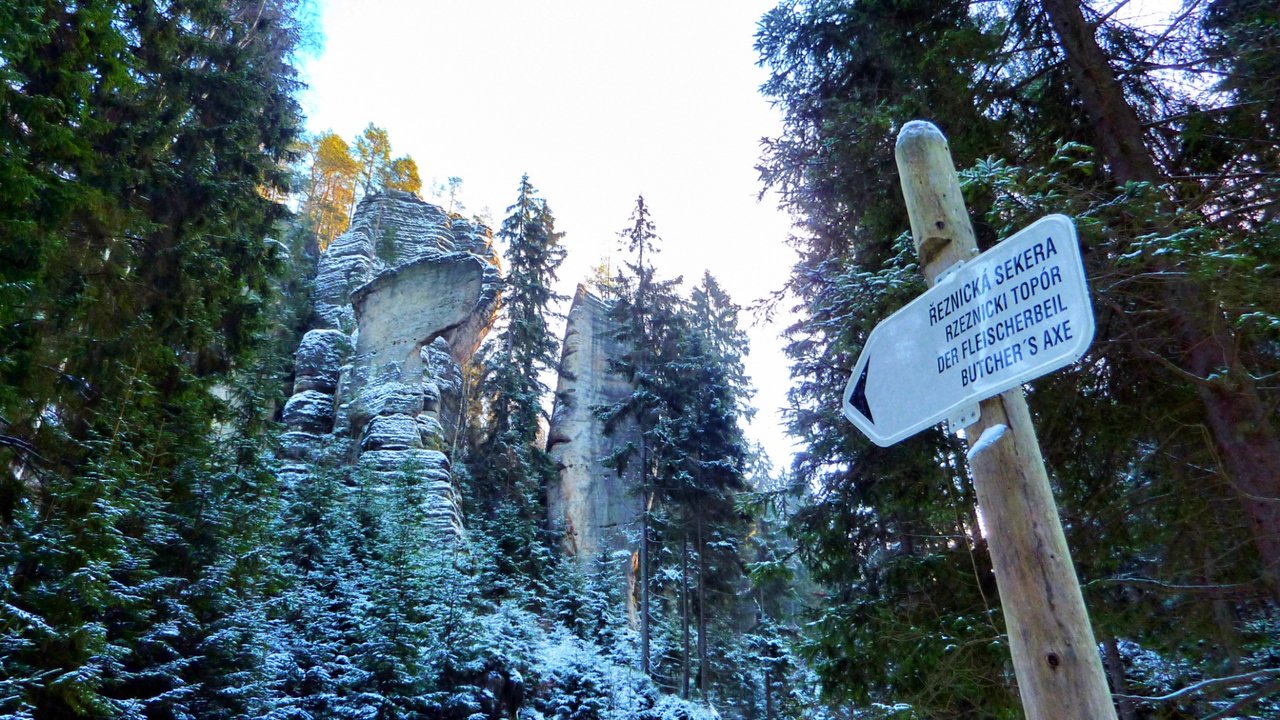 Butcher axe rock
Butcher axe rock
In those days, visitors were also well entertained. At the Small Waterfall they could have a snack and at the same time listen to a harpist. On the other hand, at the sevenfold echo echoing from the walls of Křížový vrch, people used to play French horns and shoot from a mortar.
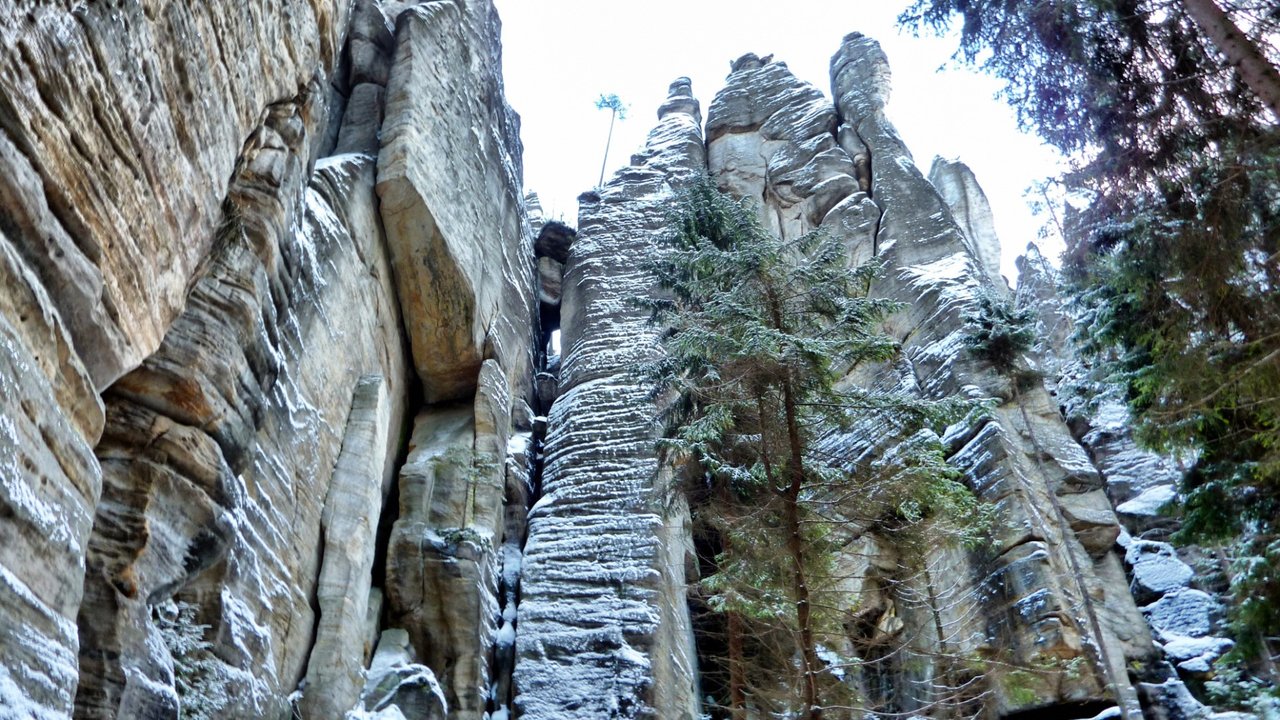 Seems like a ladder
Seems like a ladder
This is no longer the case today, as nature conservation has long been a top priority. The landscape is home to many rare and endangered animal and plant species. Since 1991, the rock town has been part of a protected landscape area around Broumov. By the way, people here tell a completely different story about the origin of the rock town, which is probably not truer, but much more beautiful: not water and wind formed the needles and towers afterwards, but the wrath of the gods.
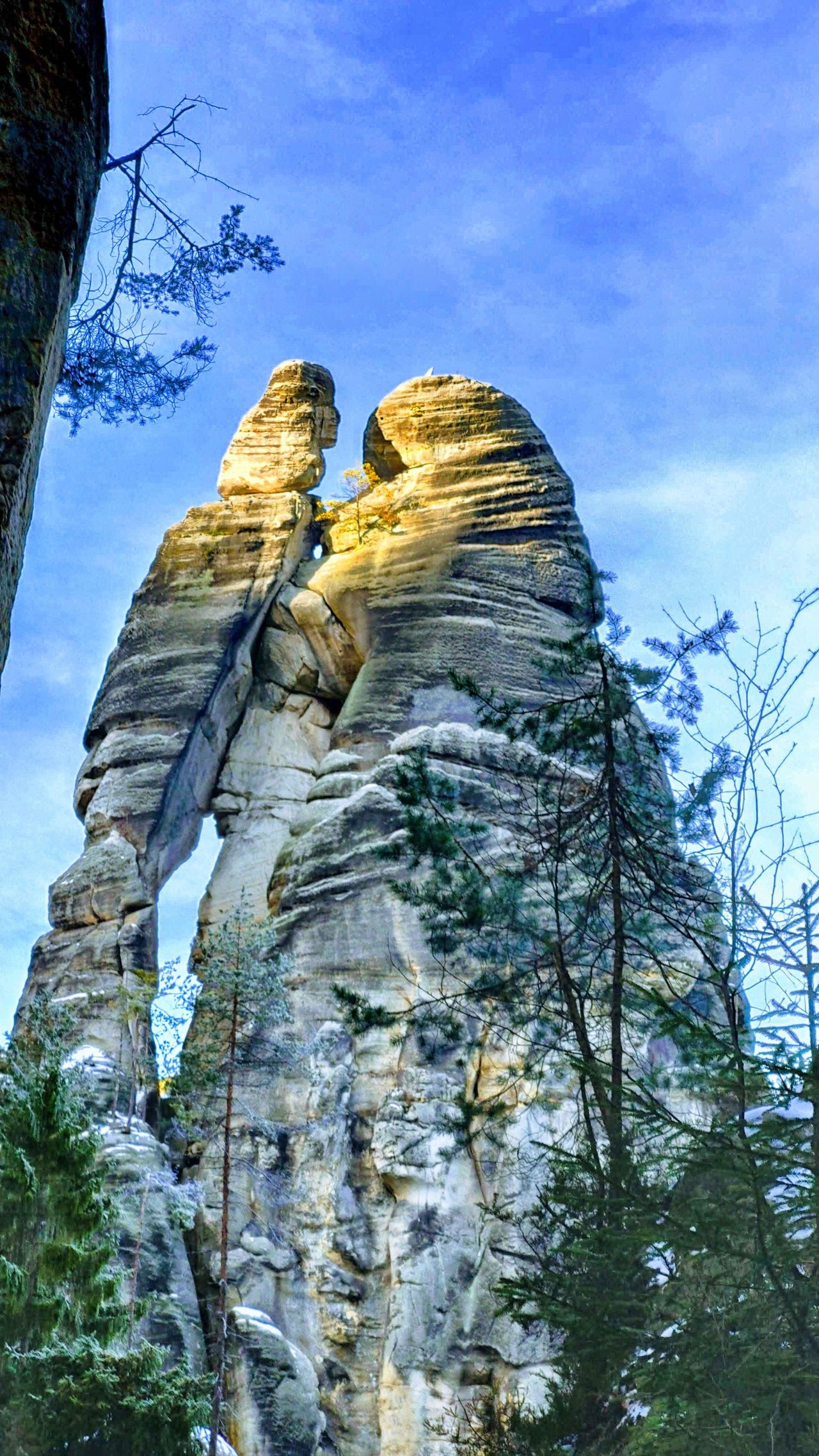 A pair of lovers
A pair of lovers
These are said to have punished the inhabitants of now forgotten former cities for letting robbers into the rich Bohemian lands. And so the cities and all their inhabitants were cursed by the gods and turned to stone as a reminder of the betrayal that the gods could not forgive.
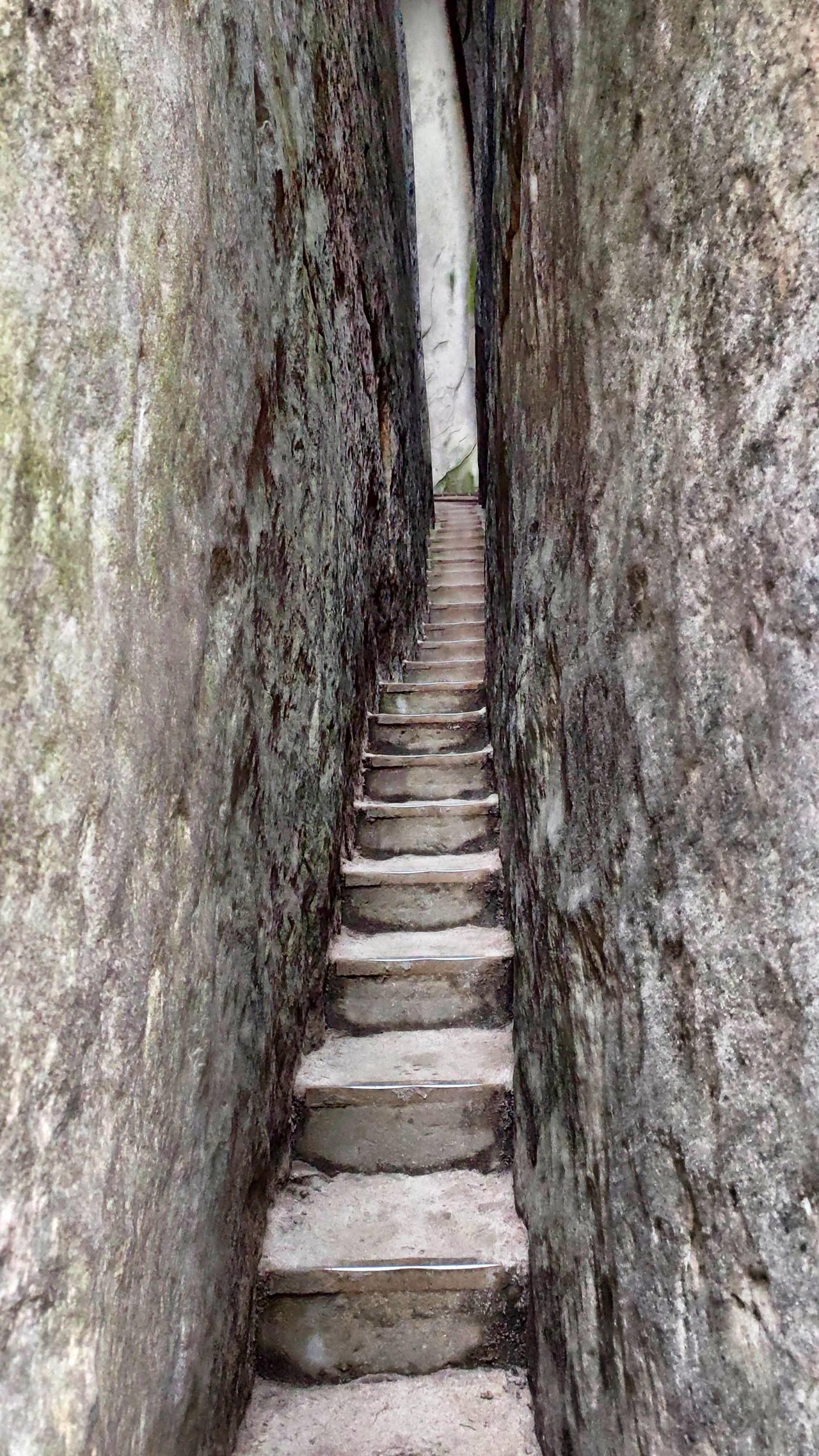 The stairway to the summit
The stairway to the summit
Among Czechs and Poles, the Adersbach Rock Town is a well-known tourist attraction, but apart from these two countries, hardly anyone knows about the sensational landscape. Yet everything is prepared for even more visitors: there are two entrances with large parking lots in front, numerous souvenir and souvenir stalls and fast-food restaurants - an easy 45 minutes from Spindleruv Mlyn or Pec.
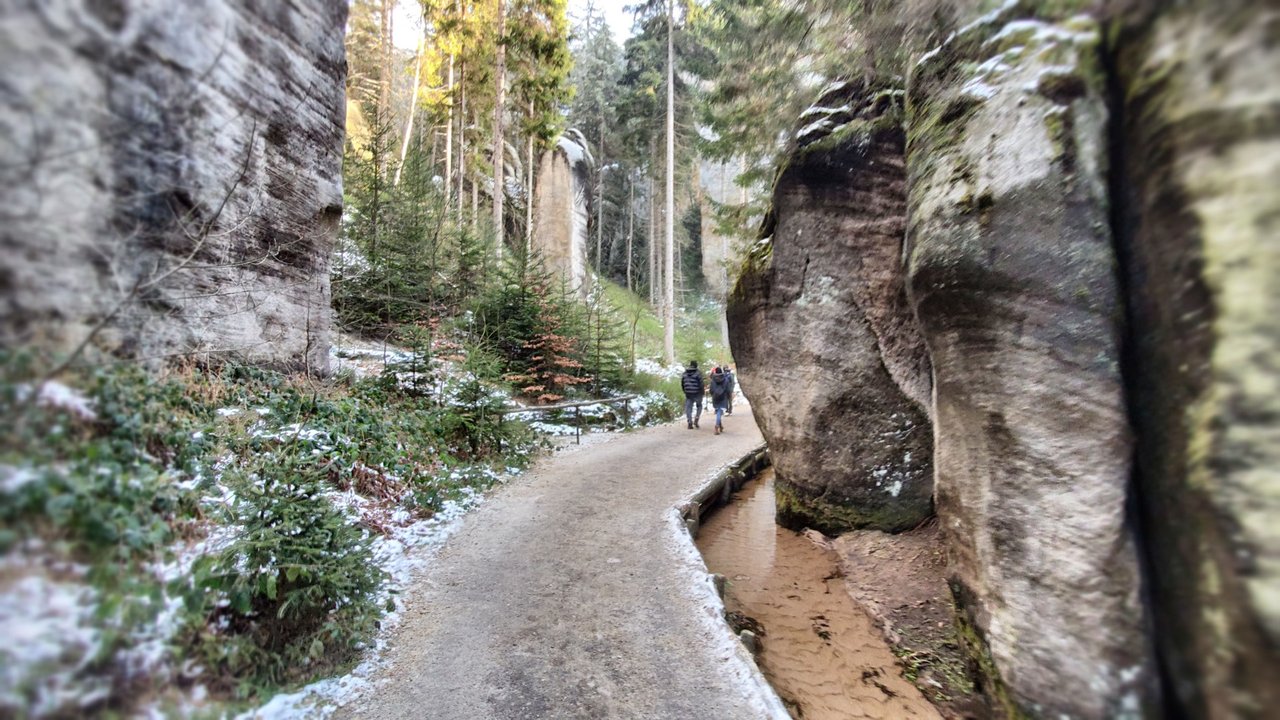 The paths are old as stone
The paths are old as stone
You can read other parts of the stories here, here, here and here and under my travelfeed-profile all the other ones..
Thank you for reading and if you like my work please follow me on Hive, Travelfeed or Steem or visit my homepage koenau.de
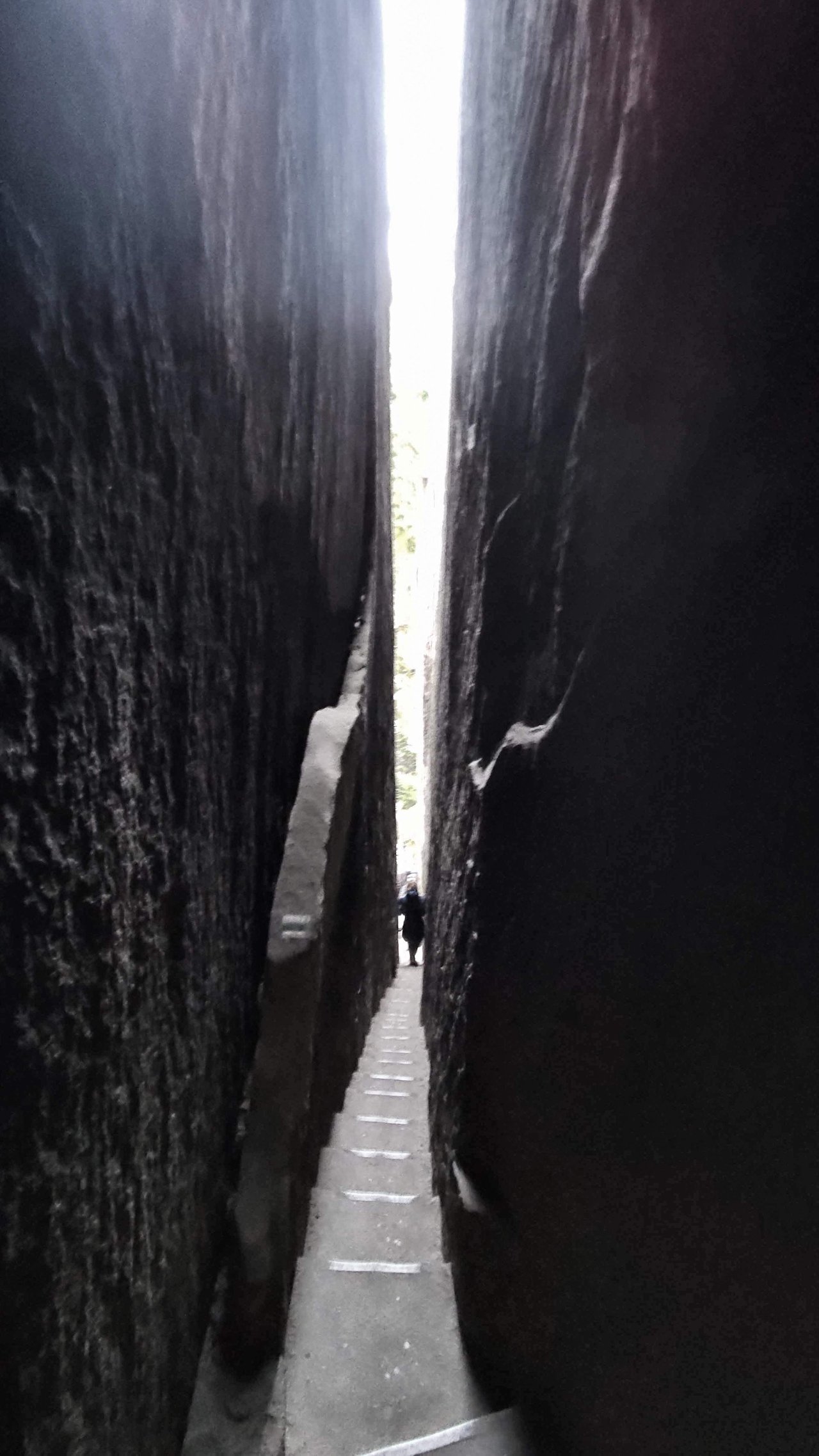 Do you feel the claustrophobia?
Do you feel the claustrophobia?
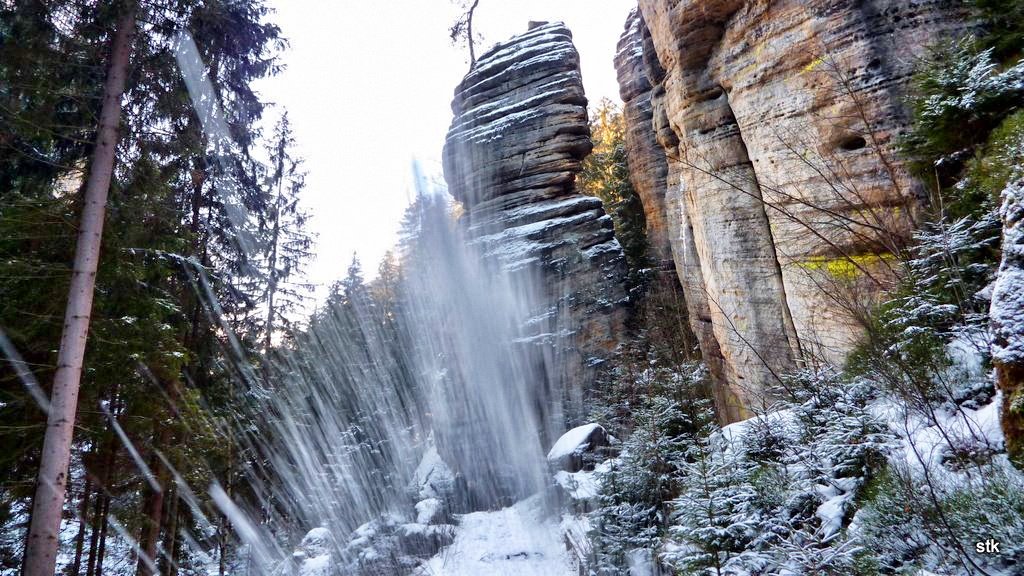 A snowstorm is coming
A snowstorm is coming
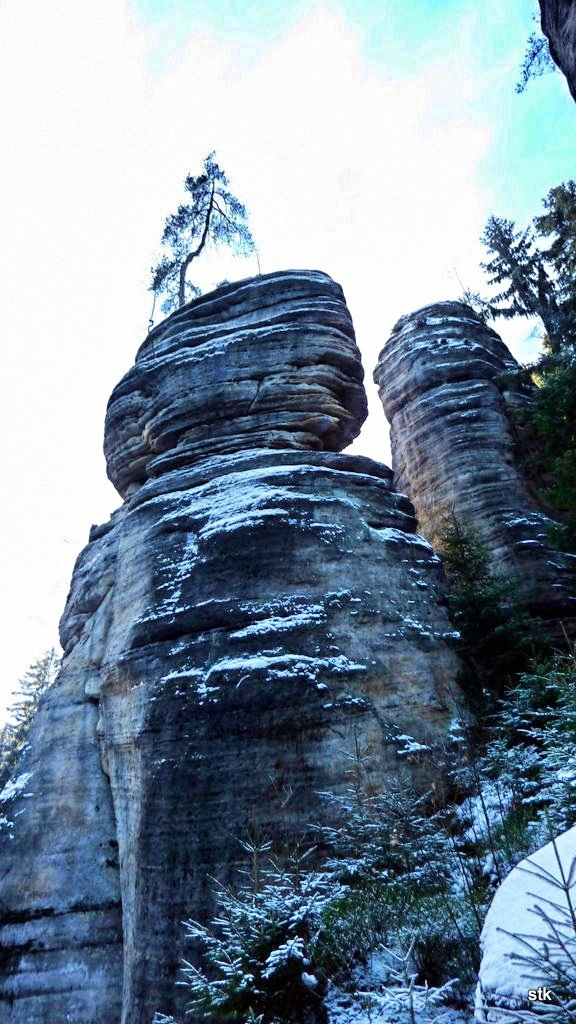
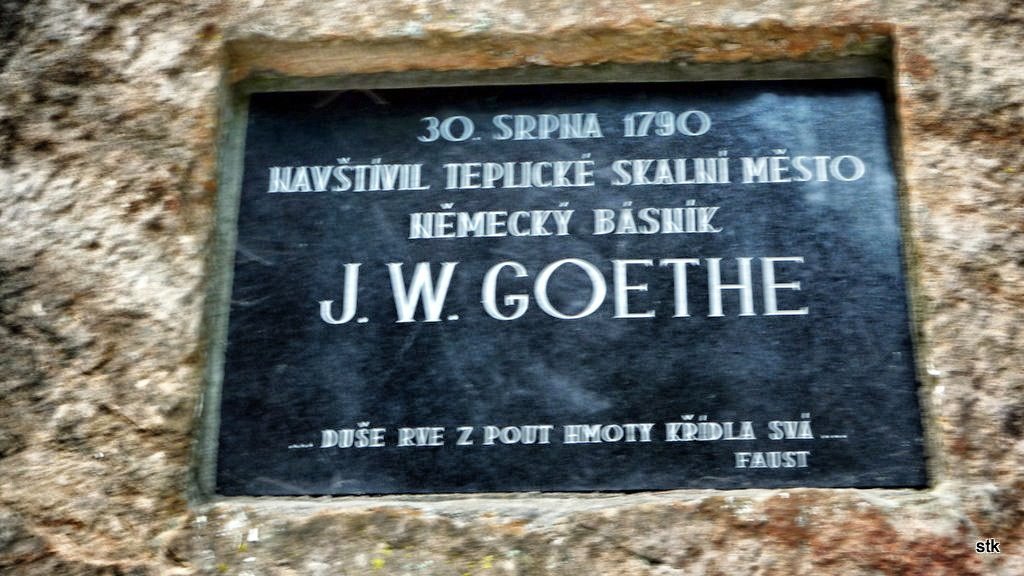 Goethe was here too
Goethe was here too
